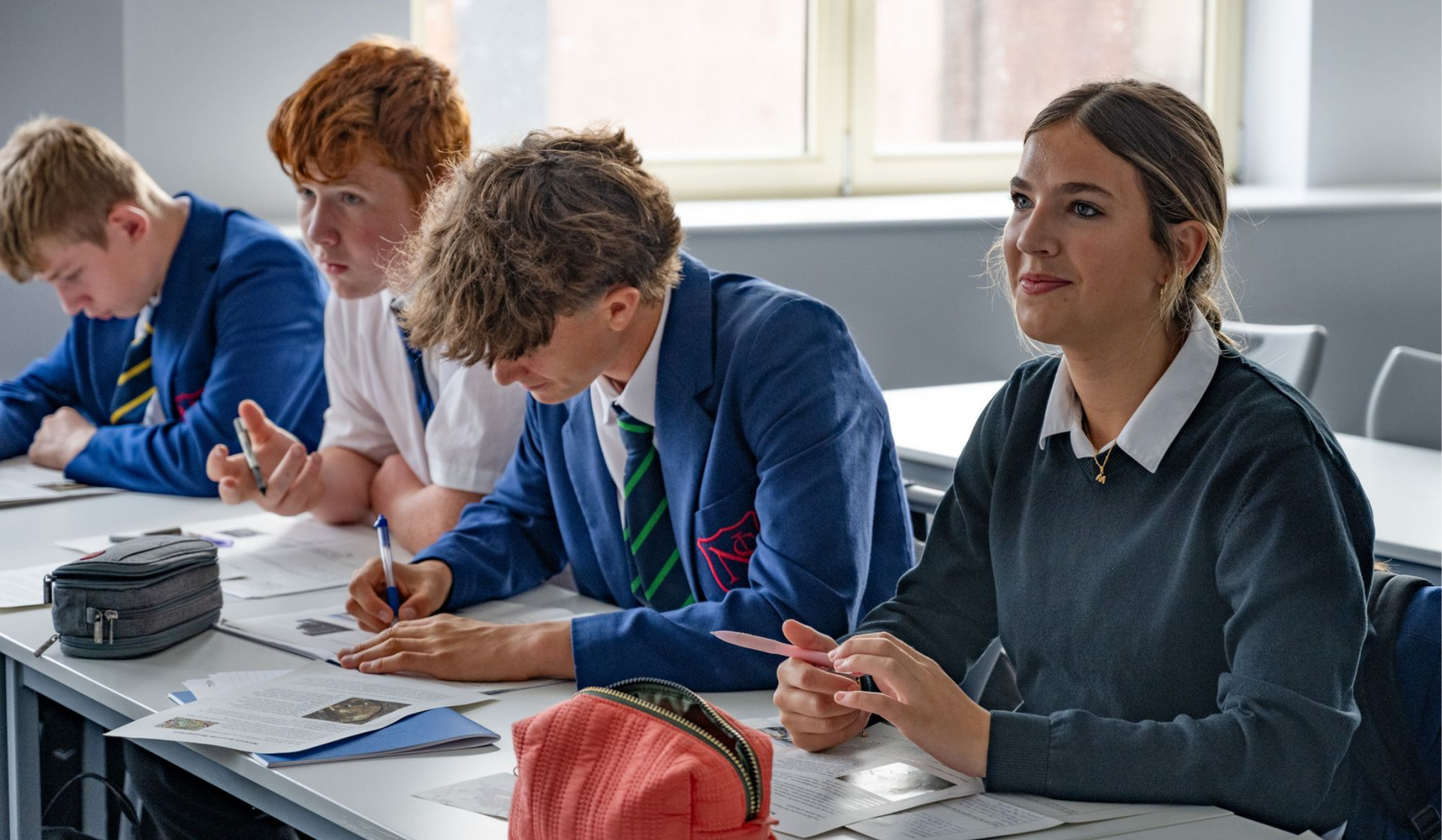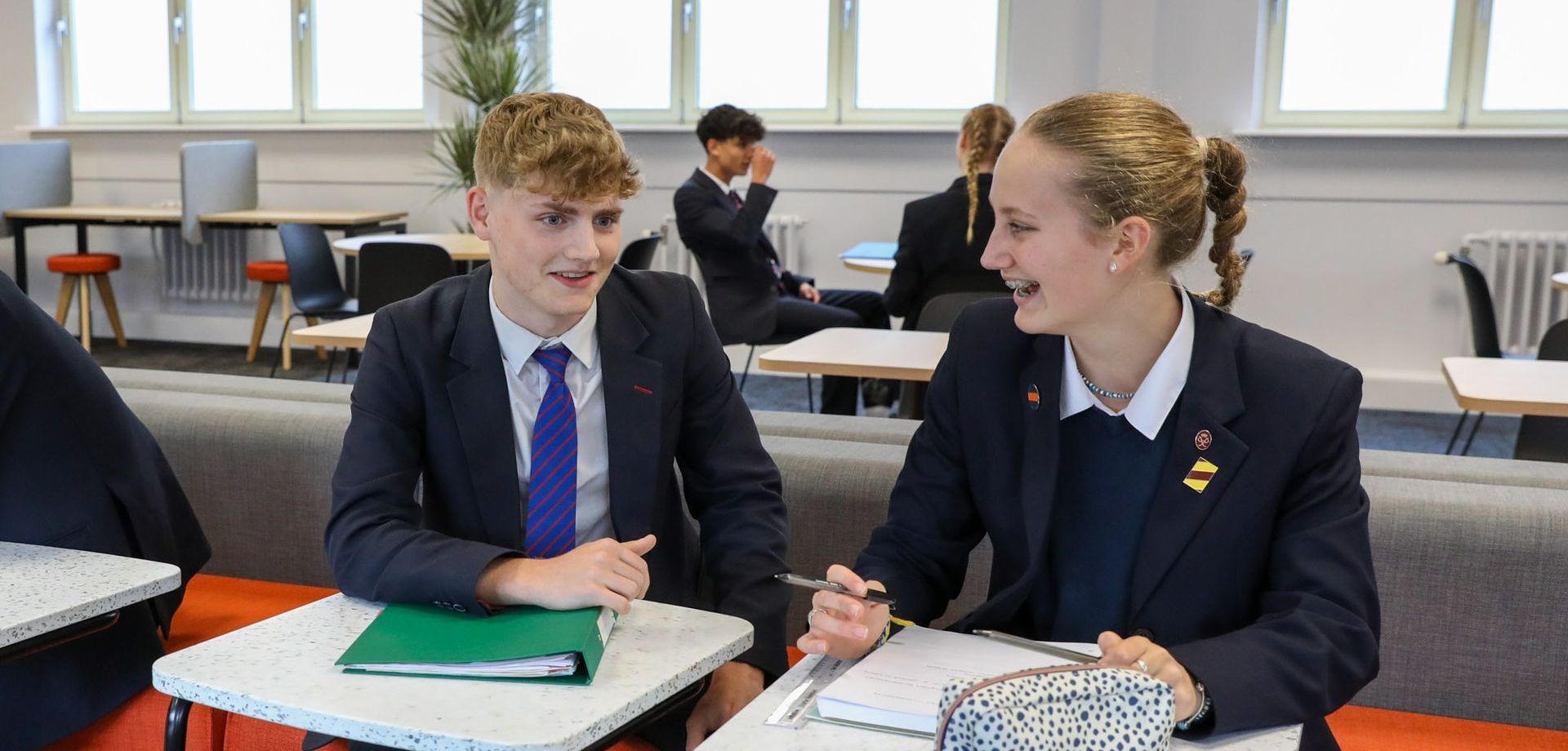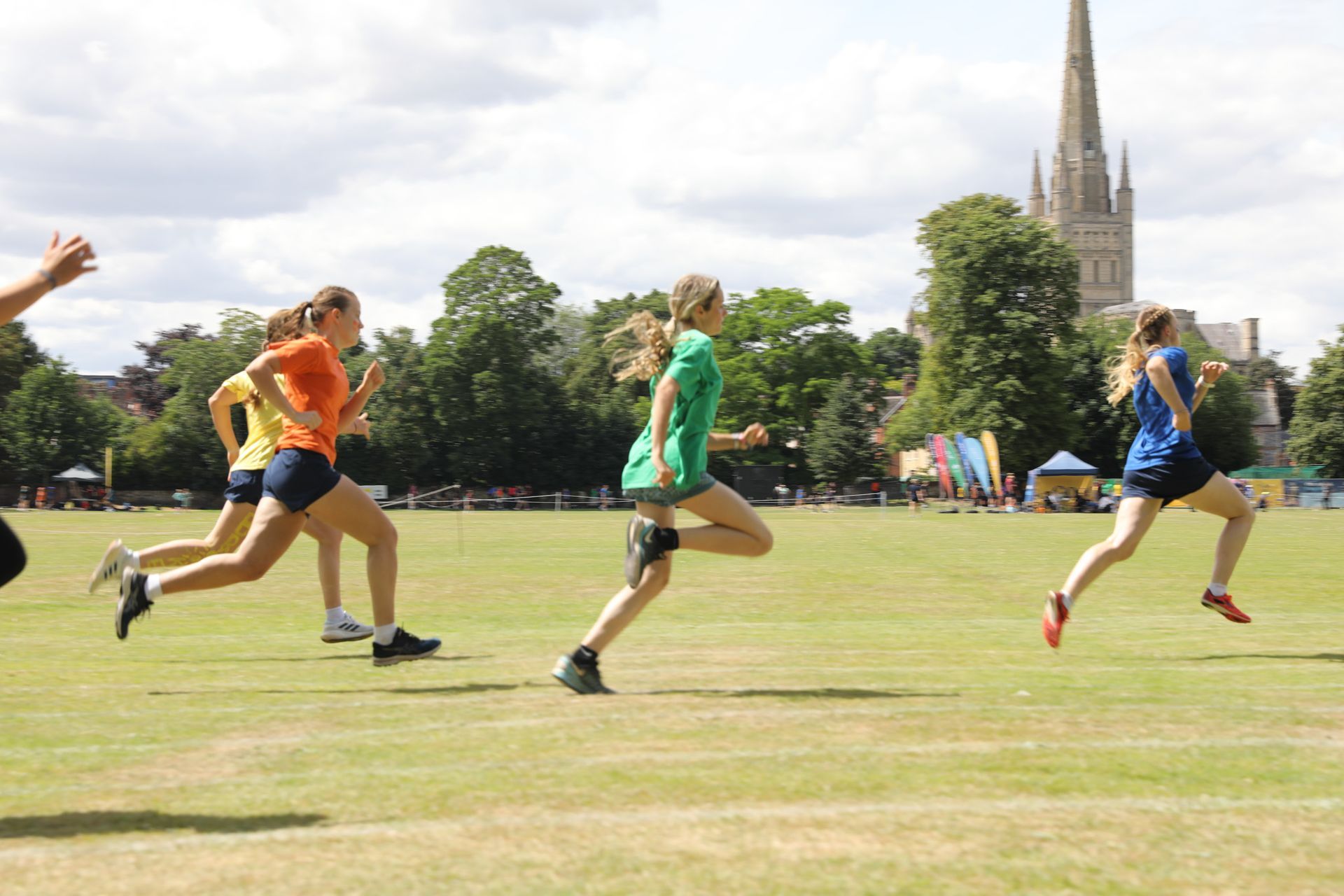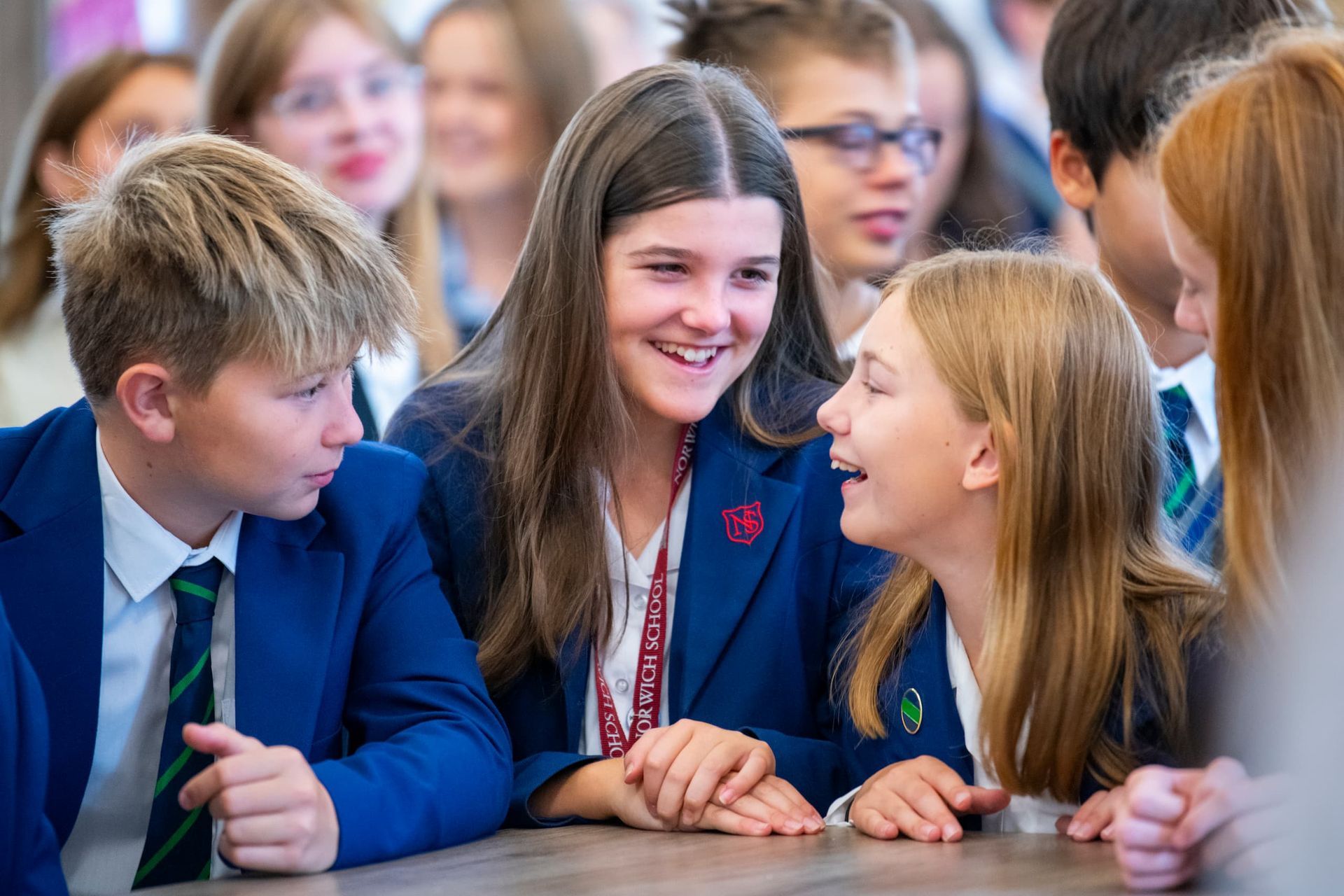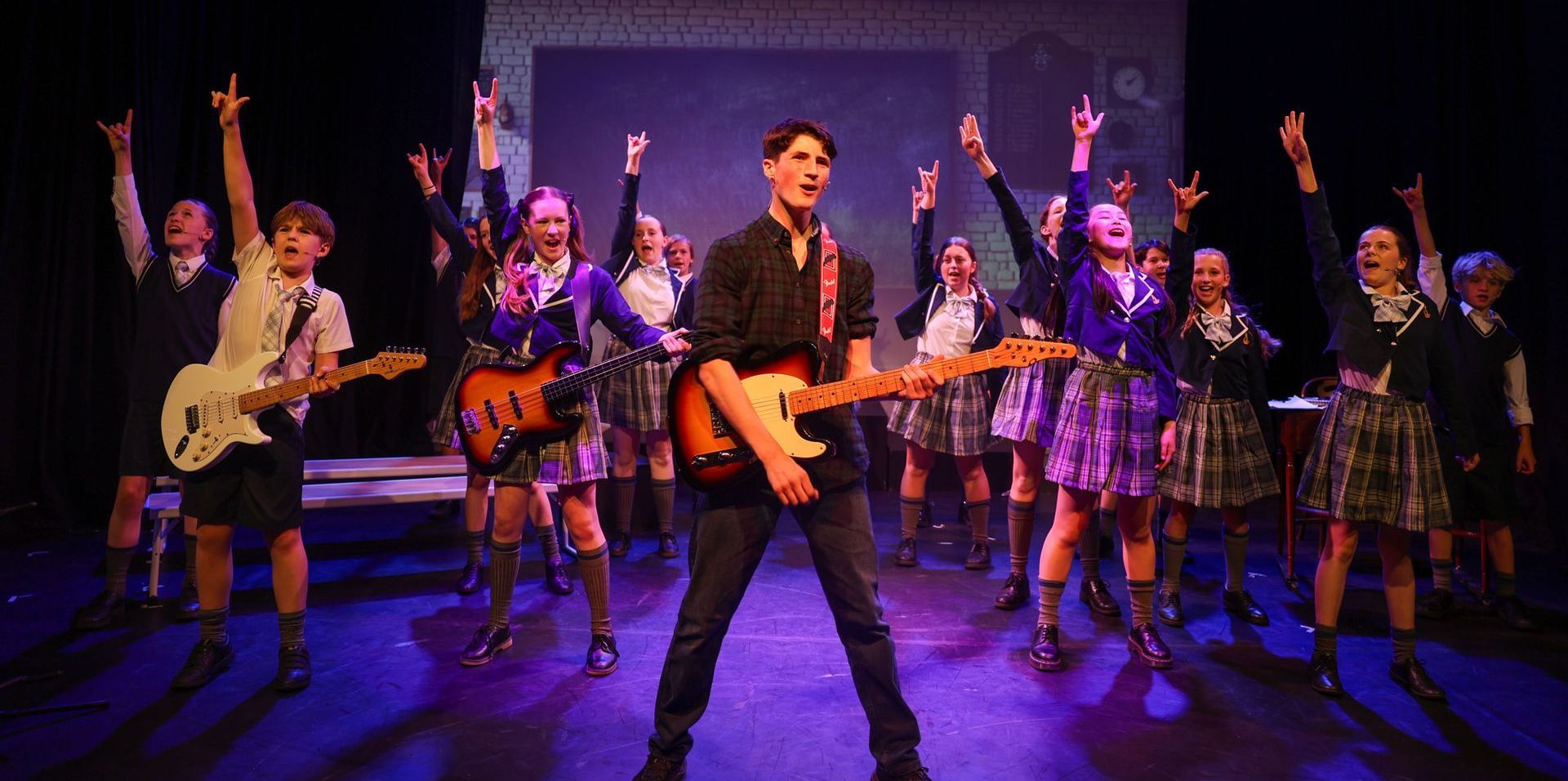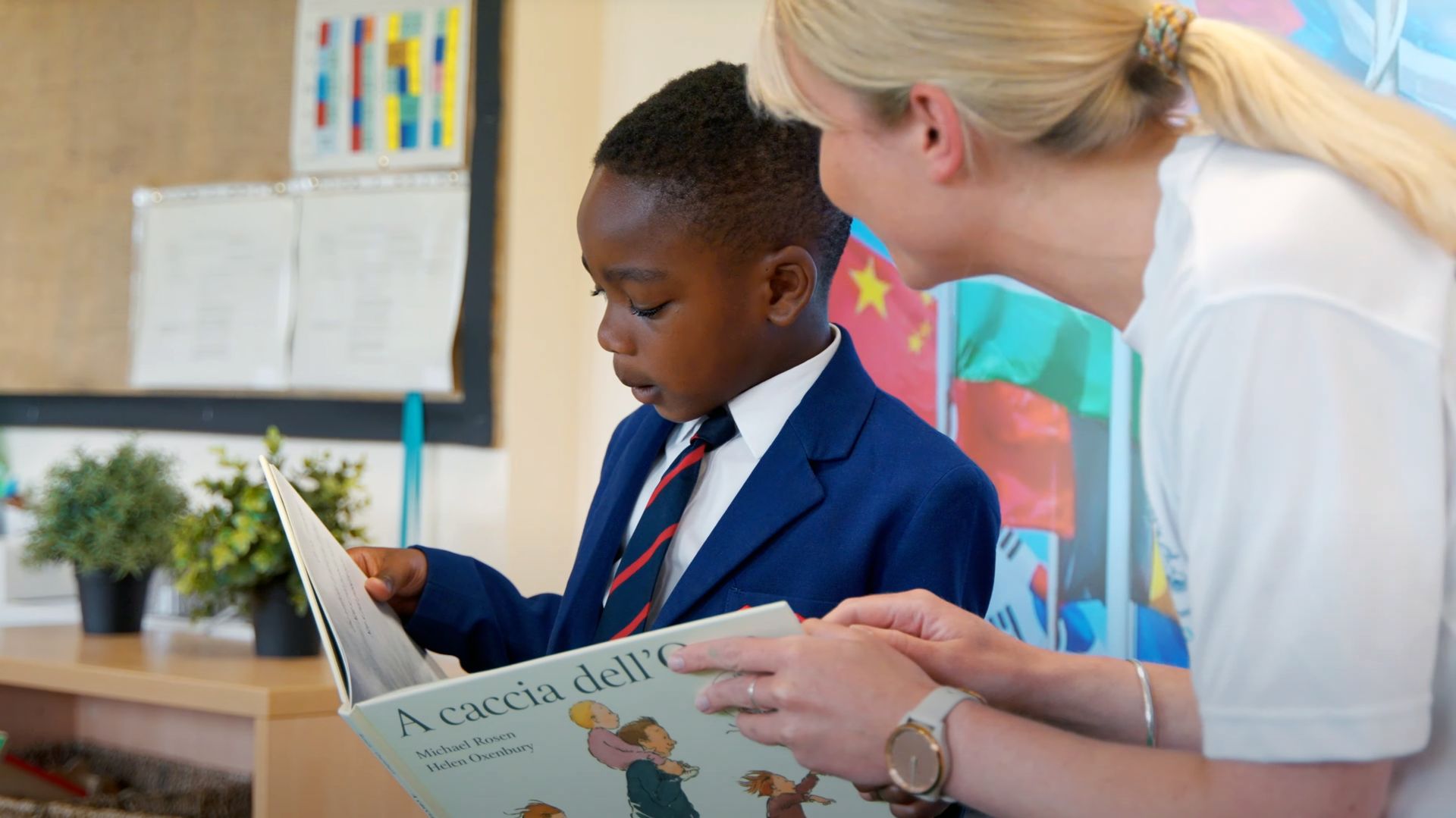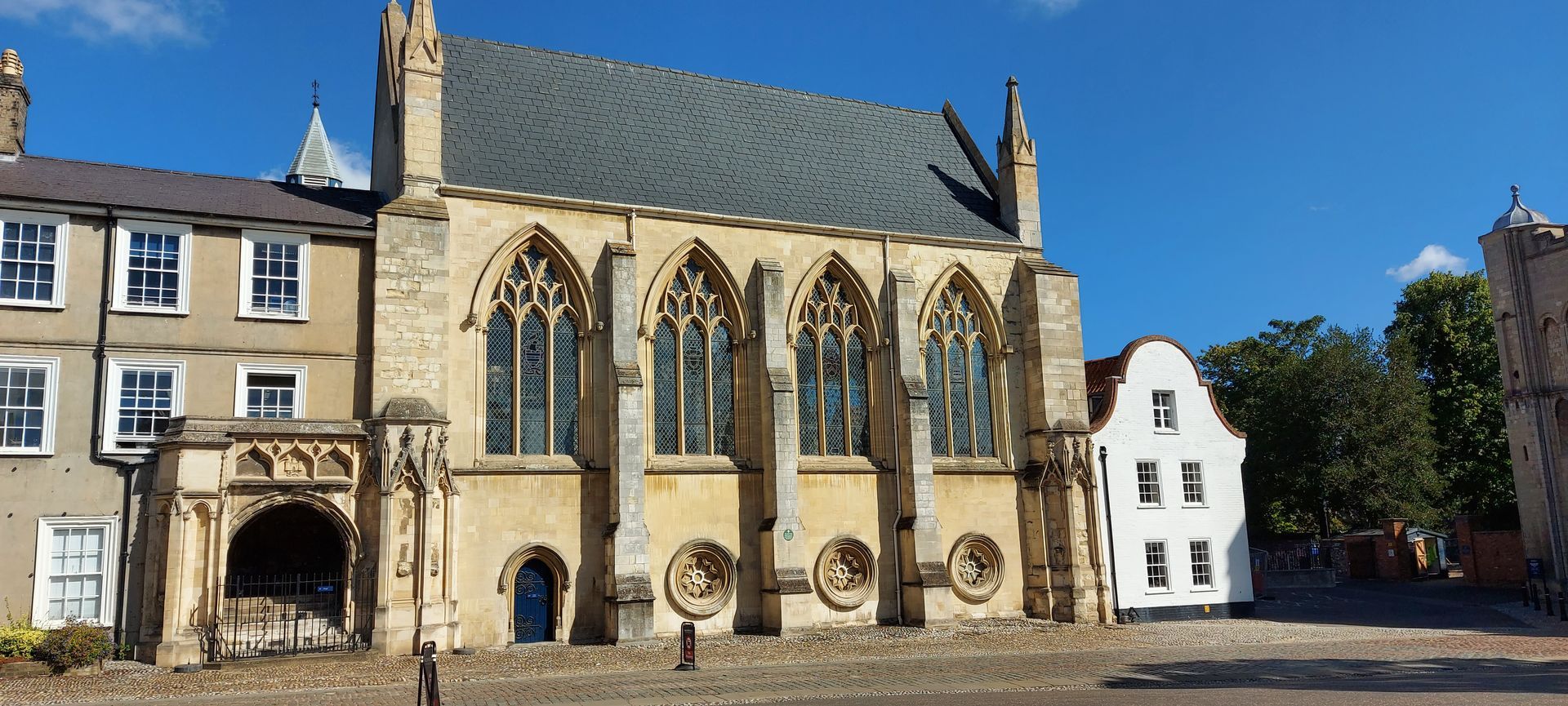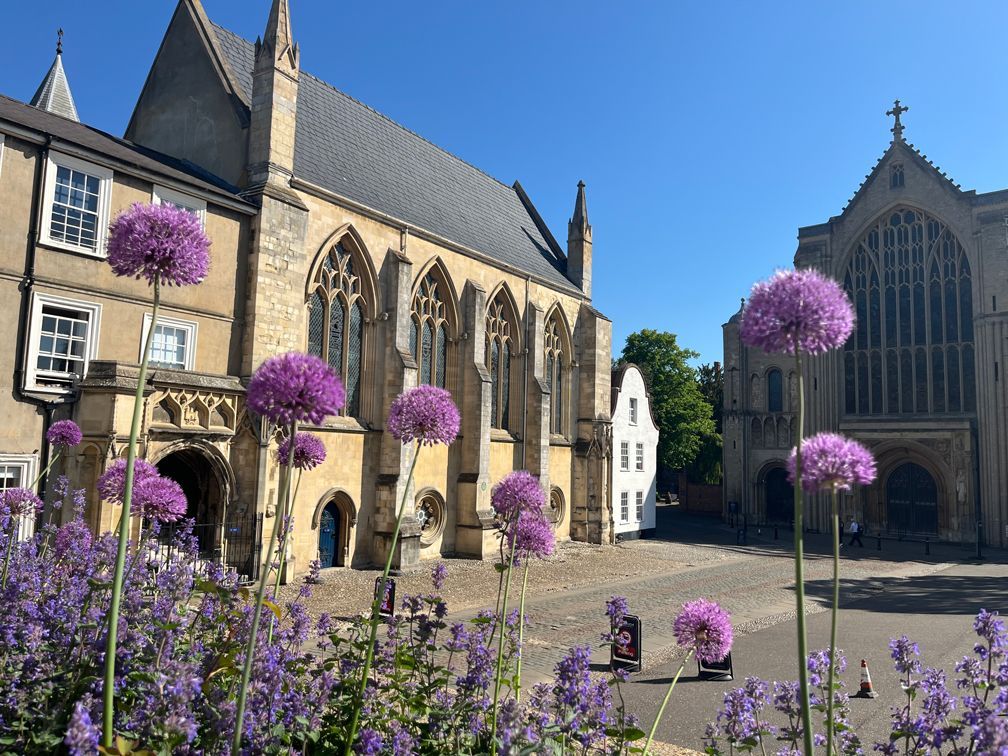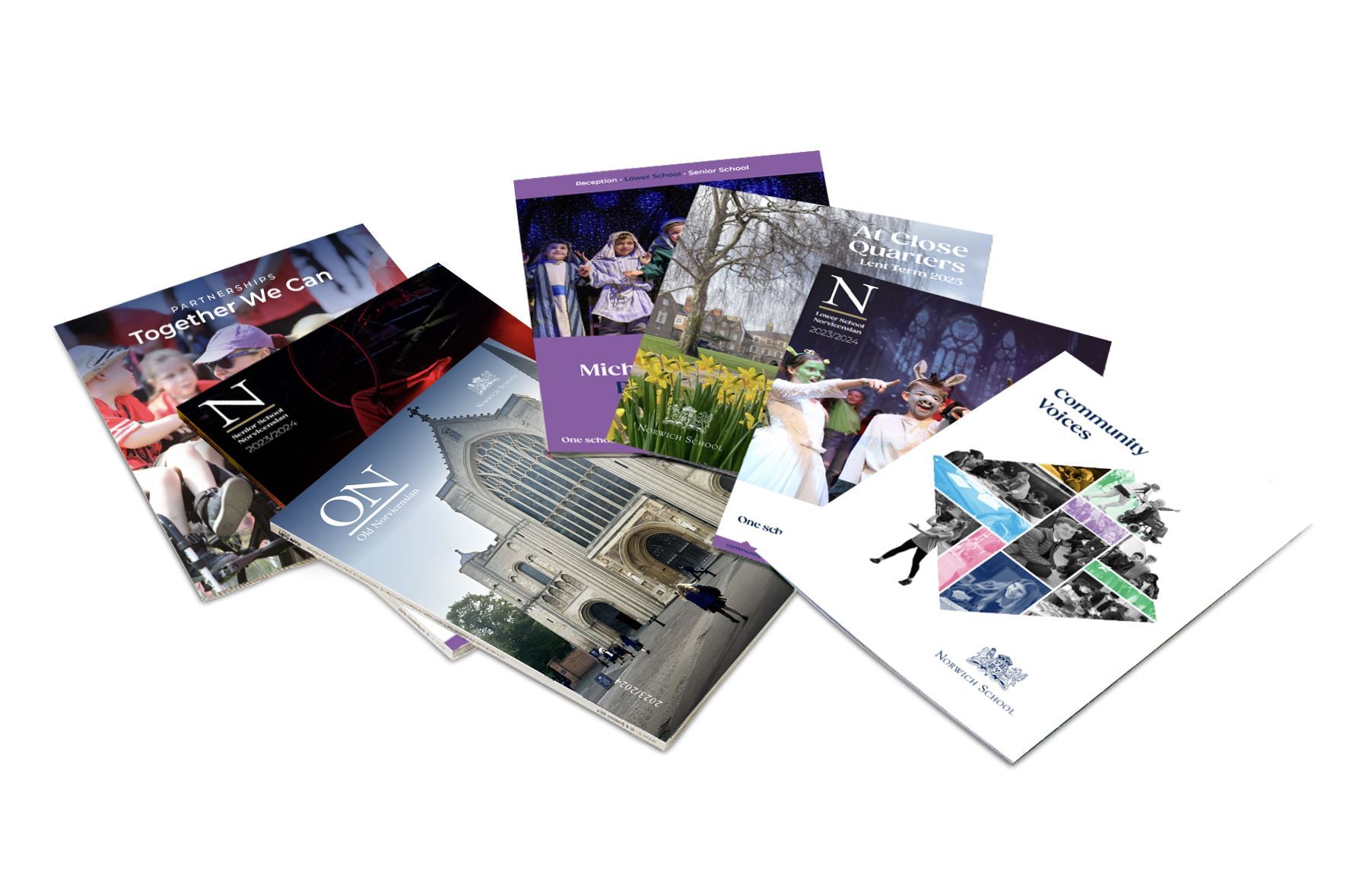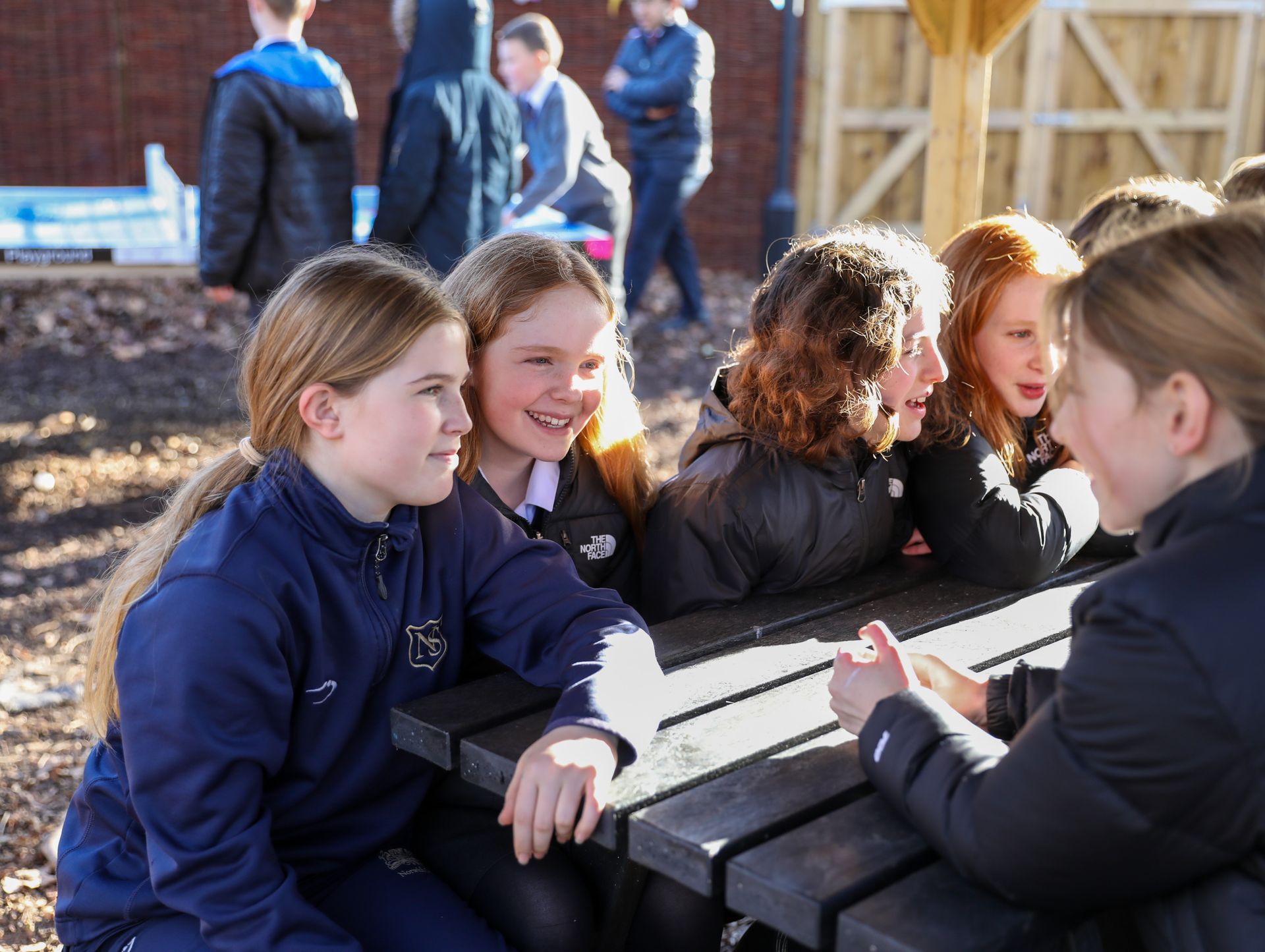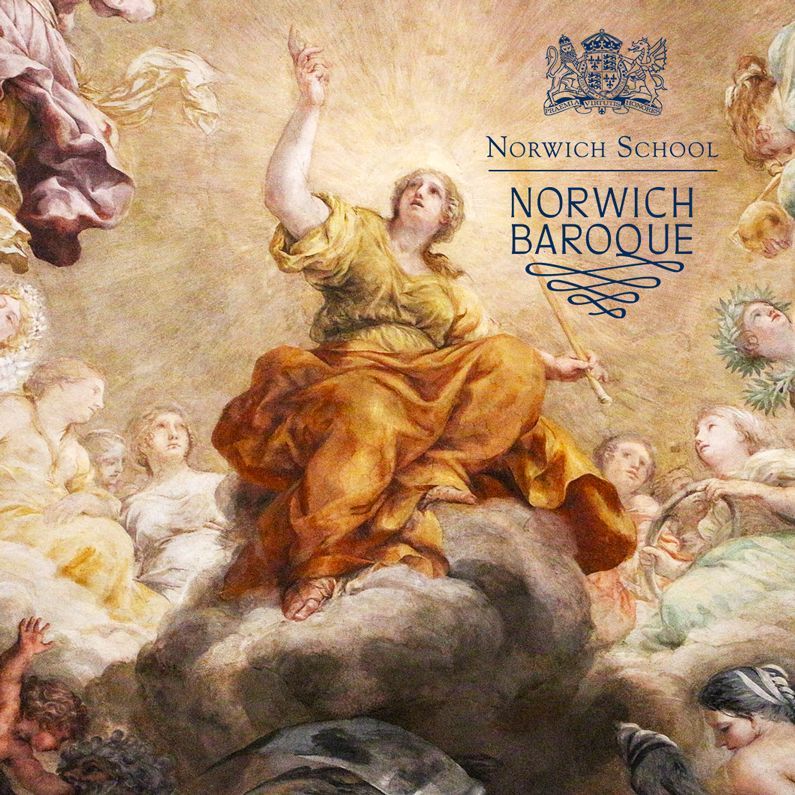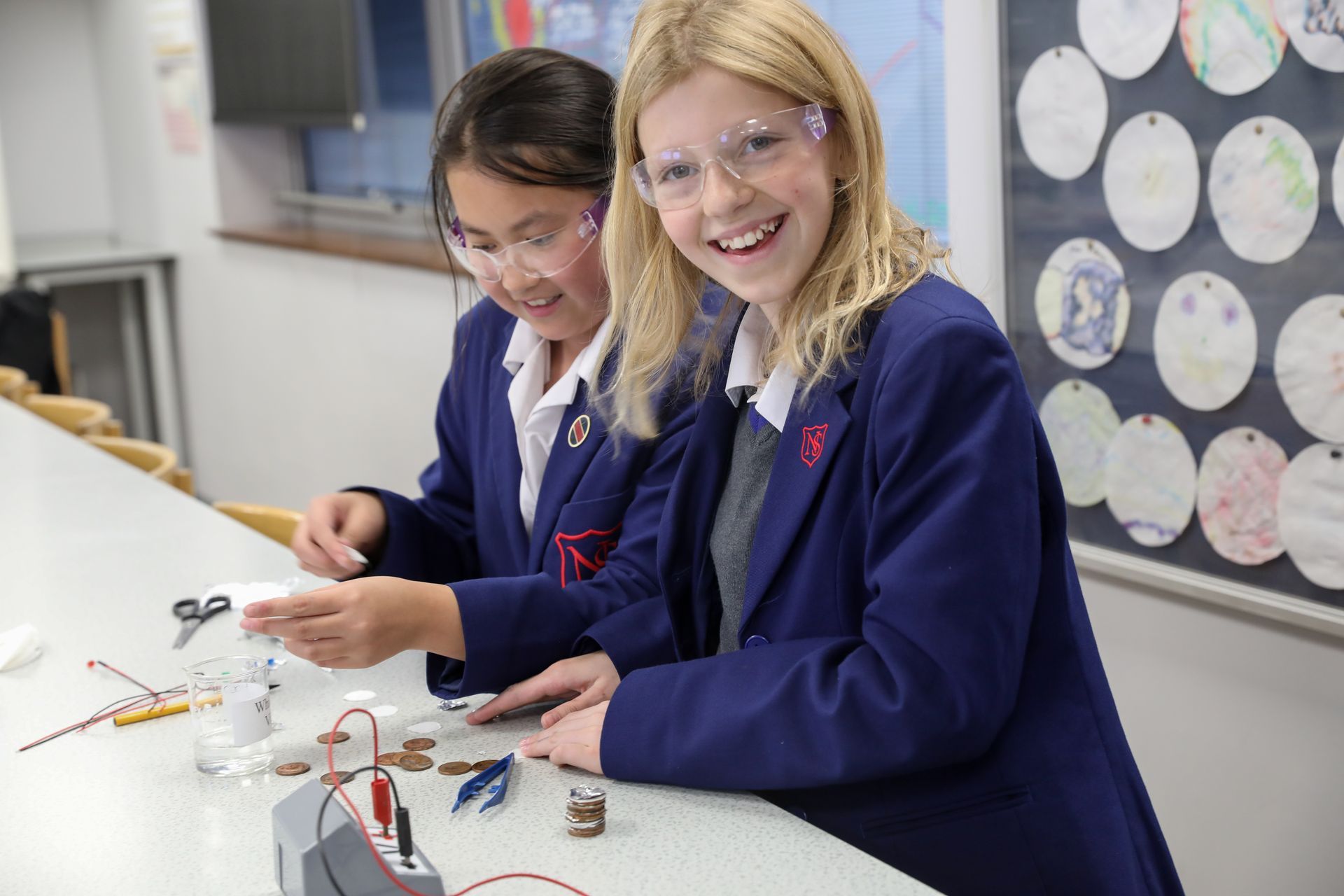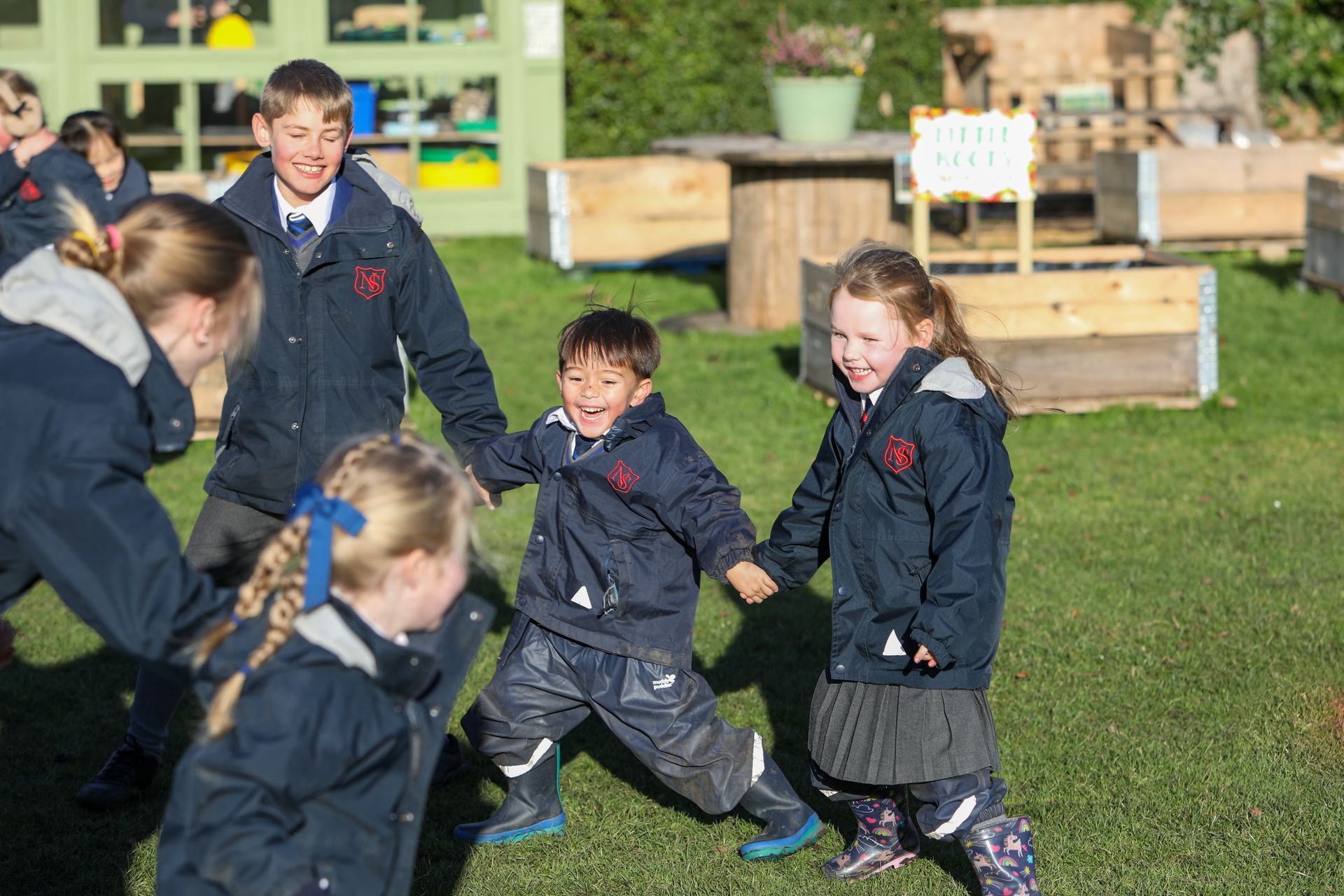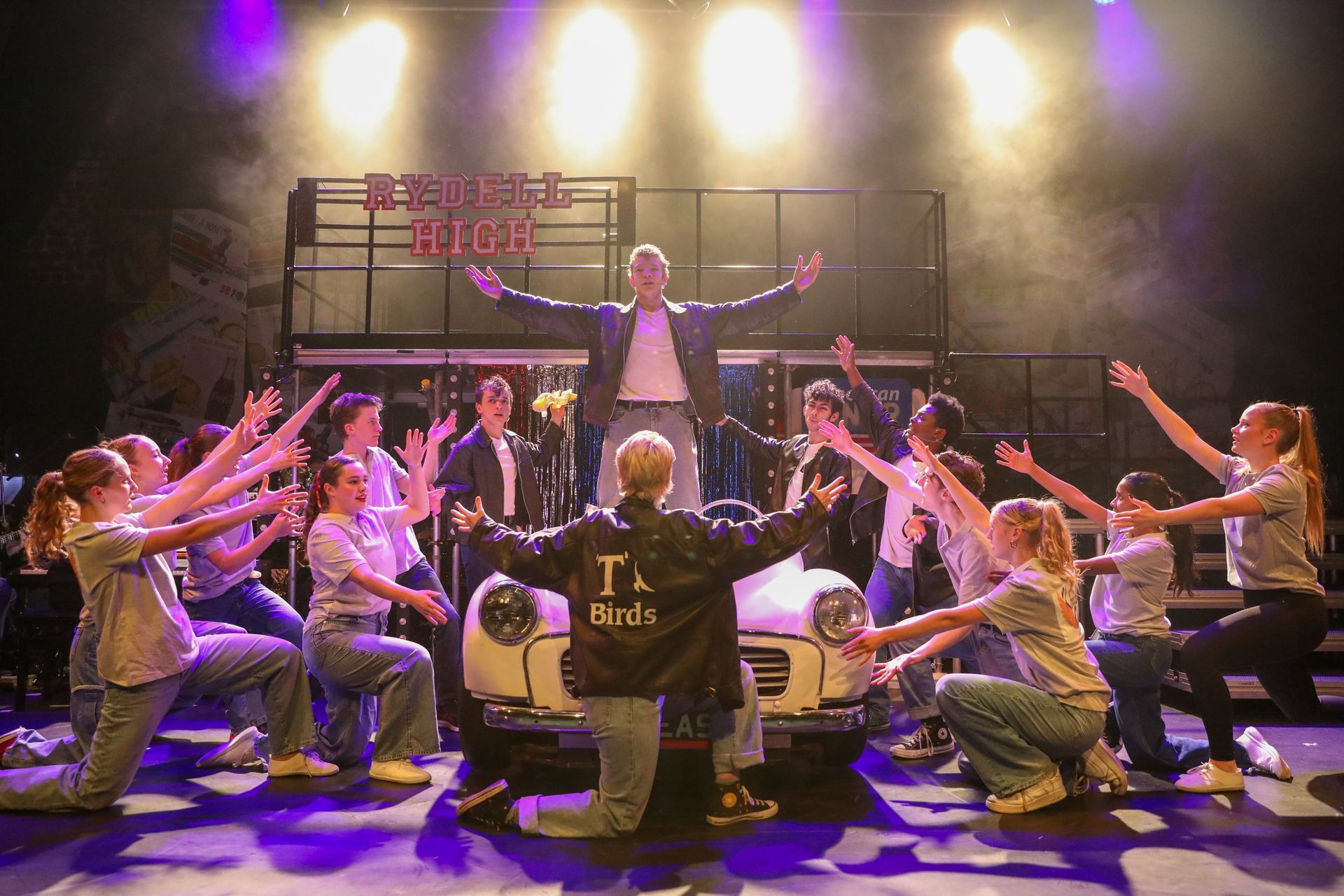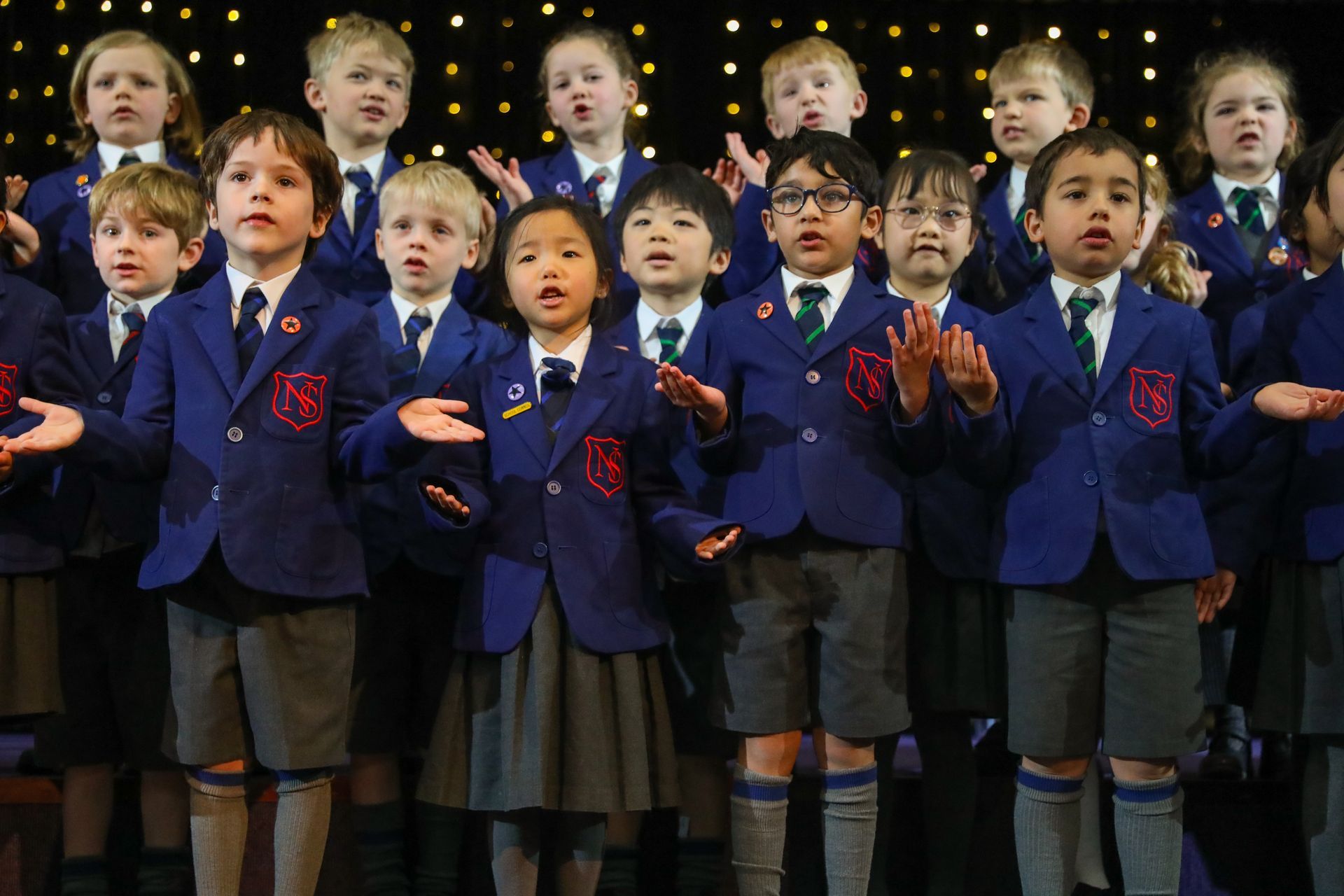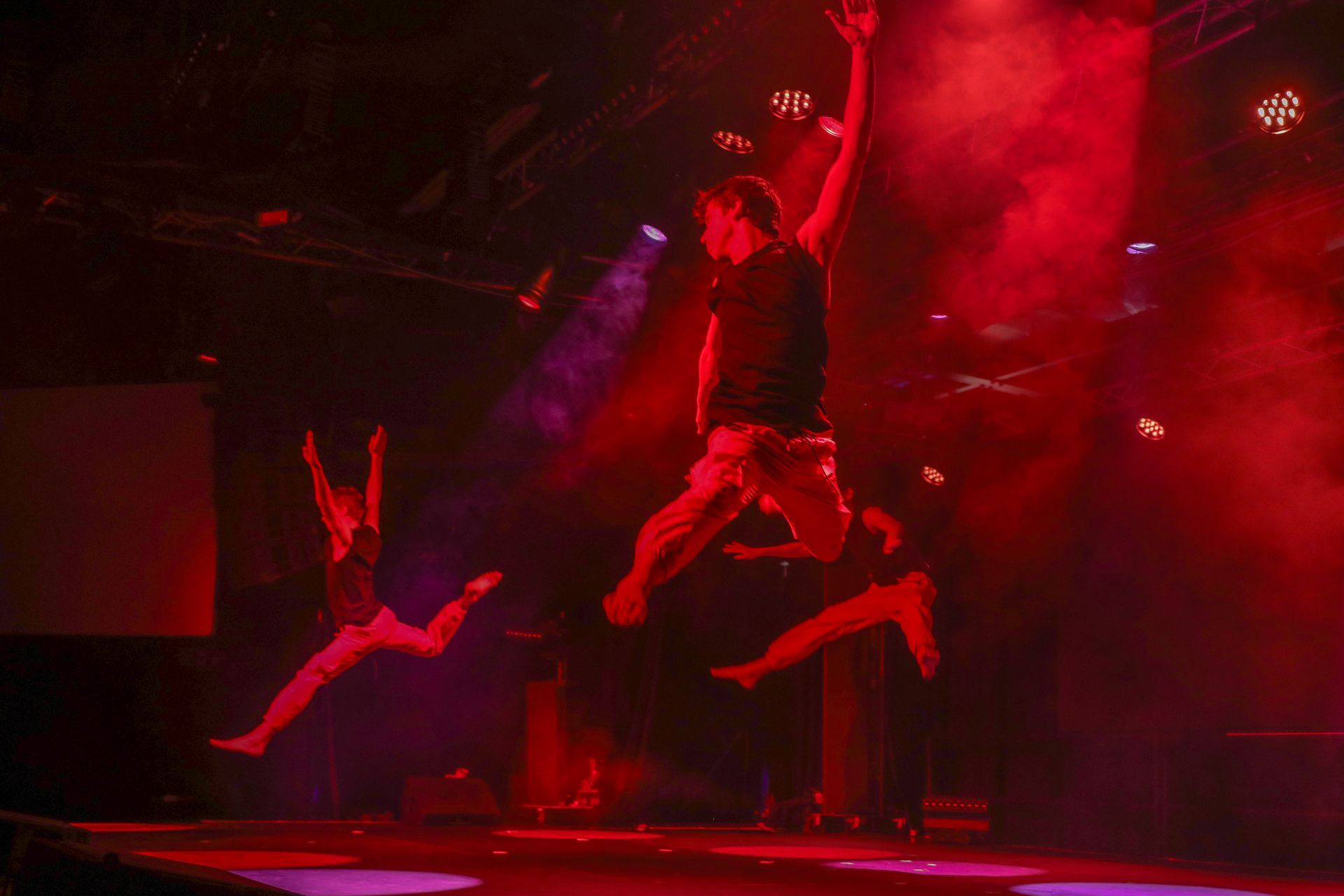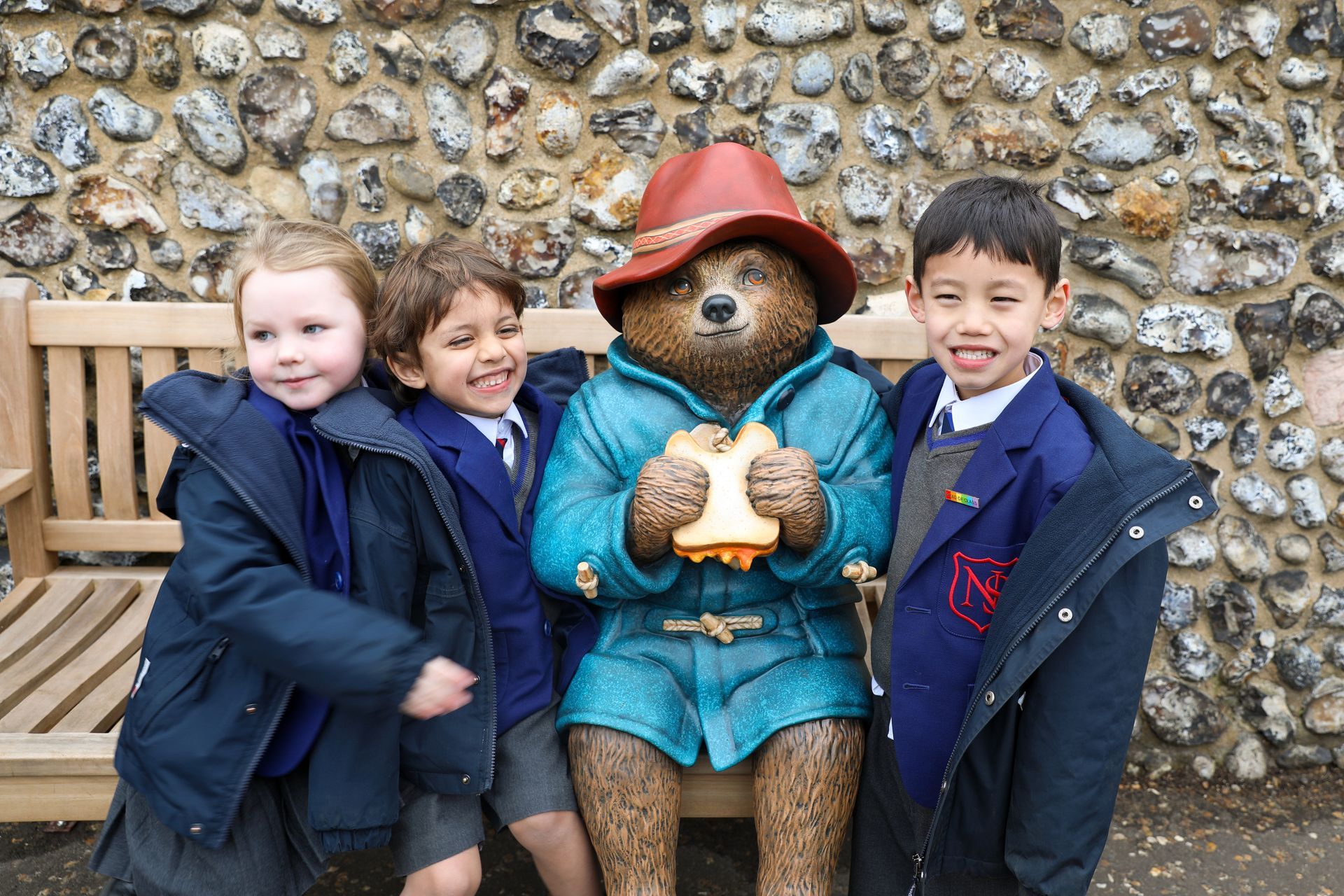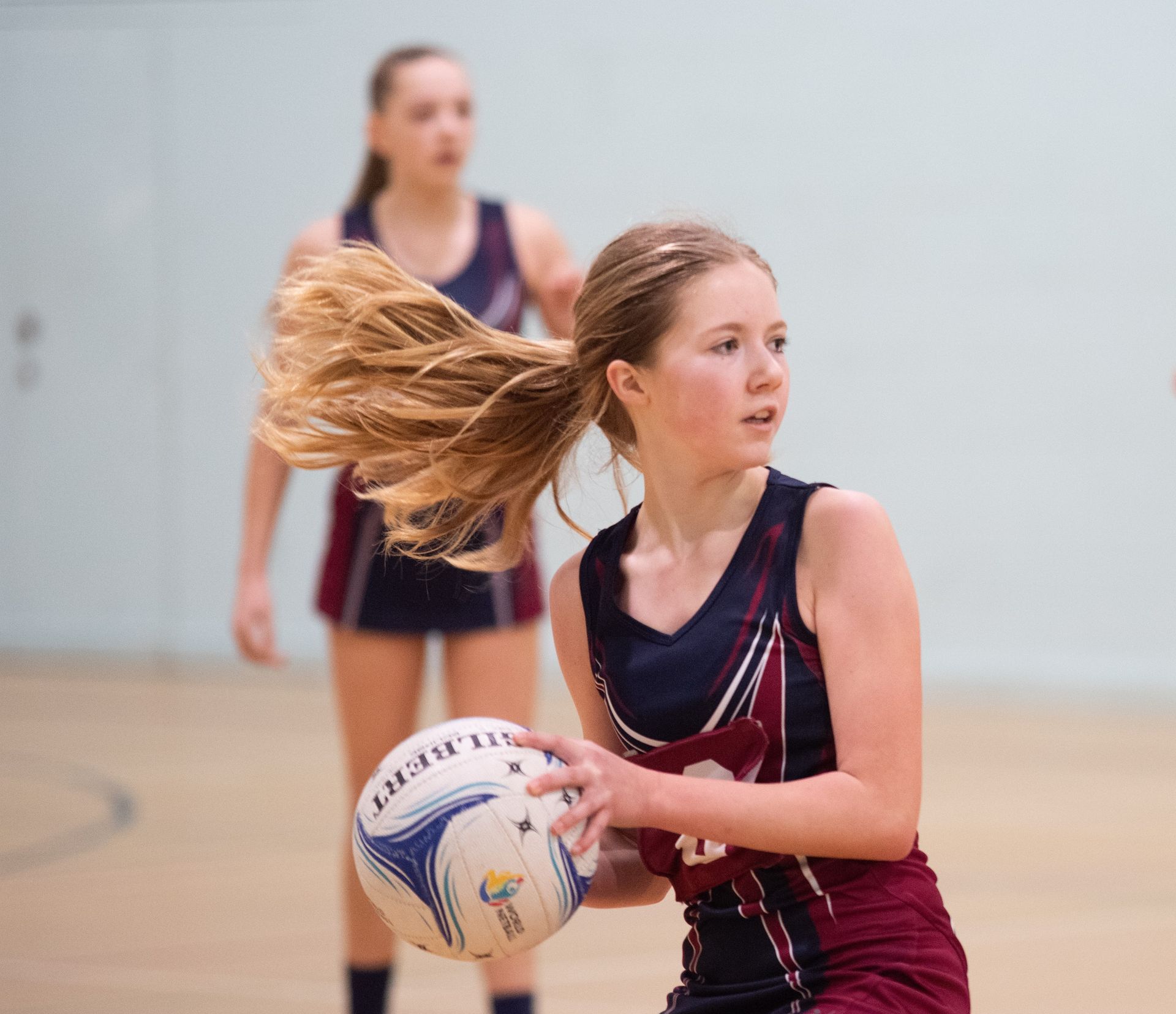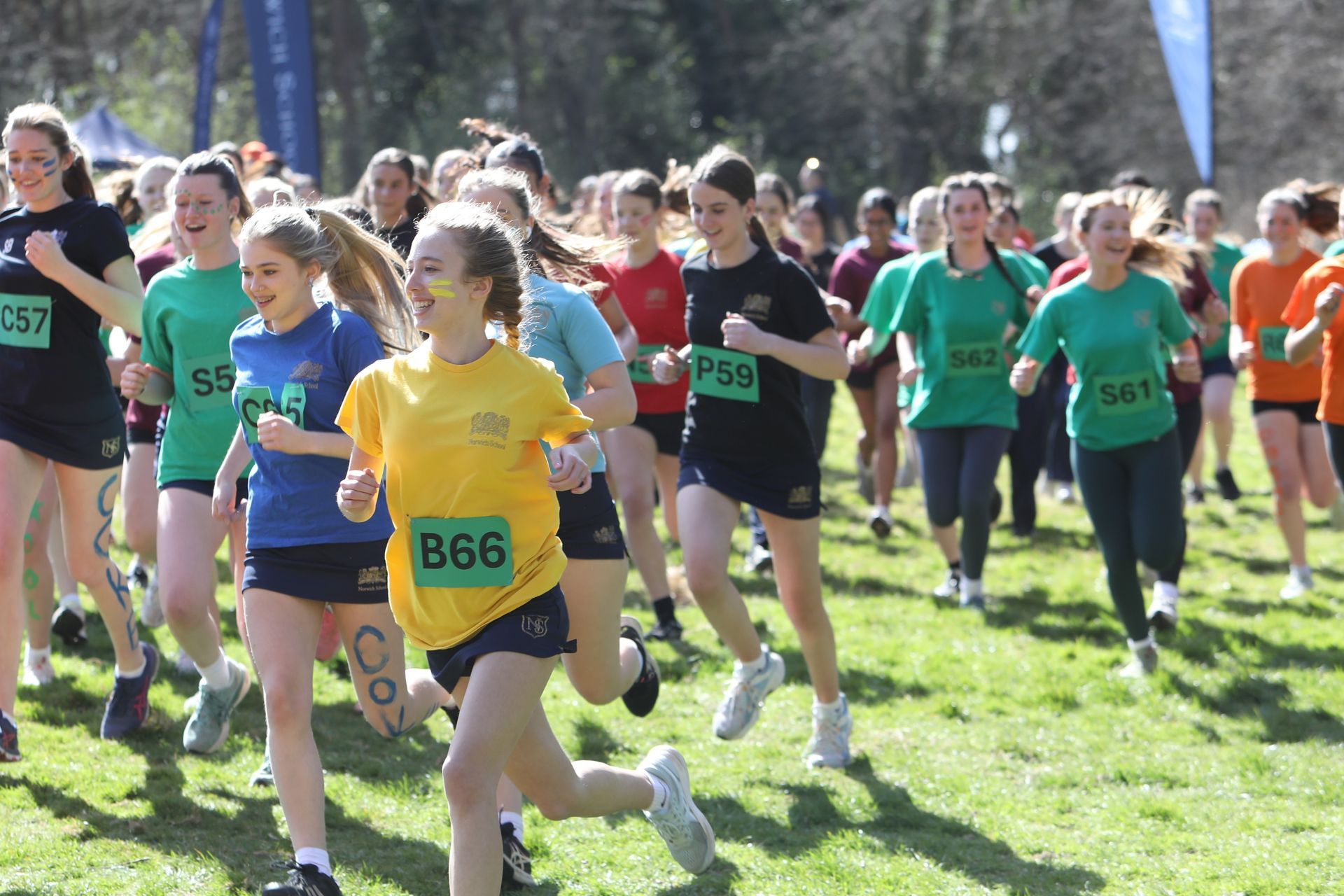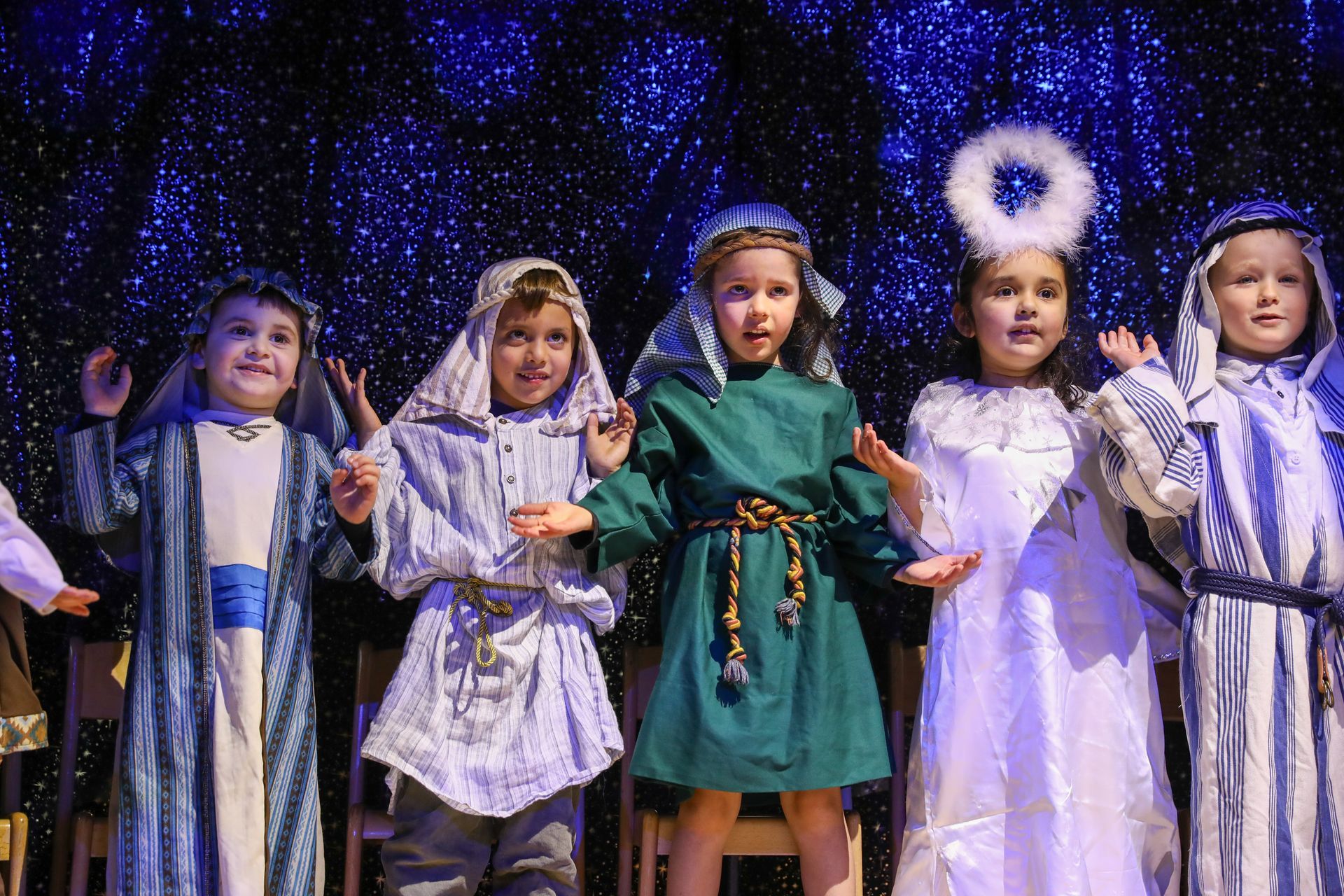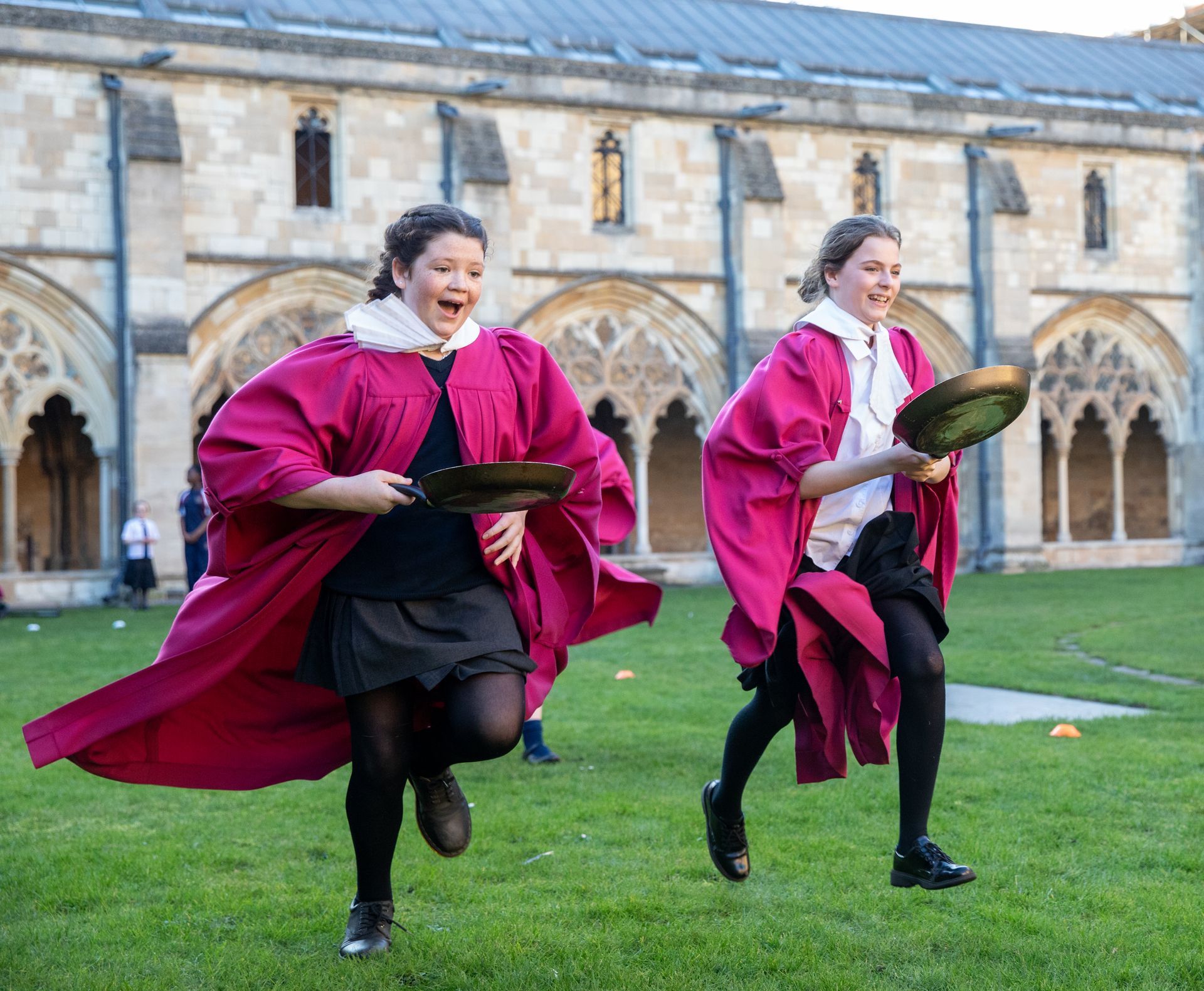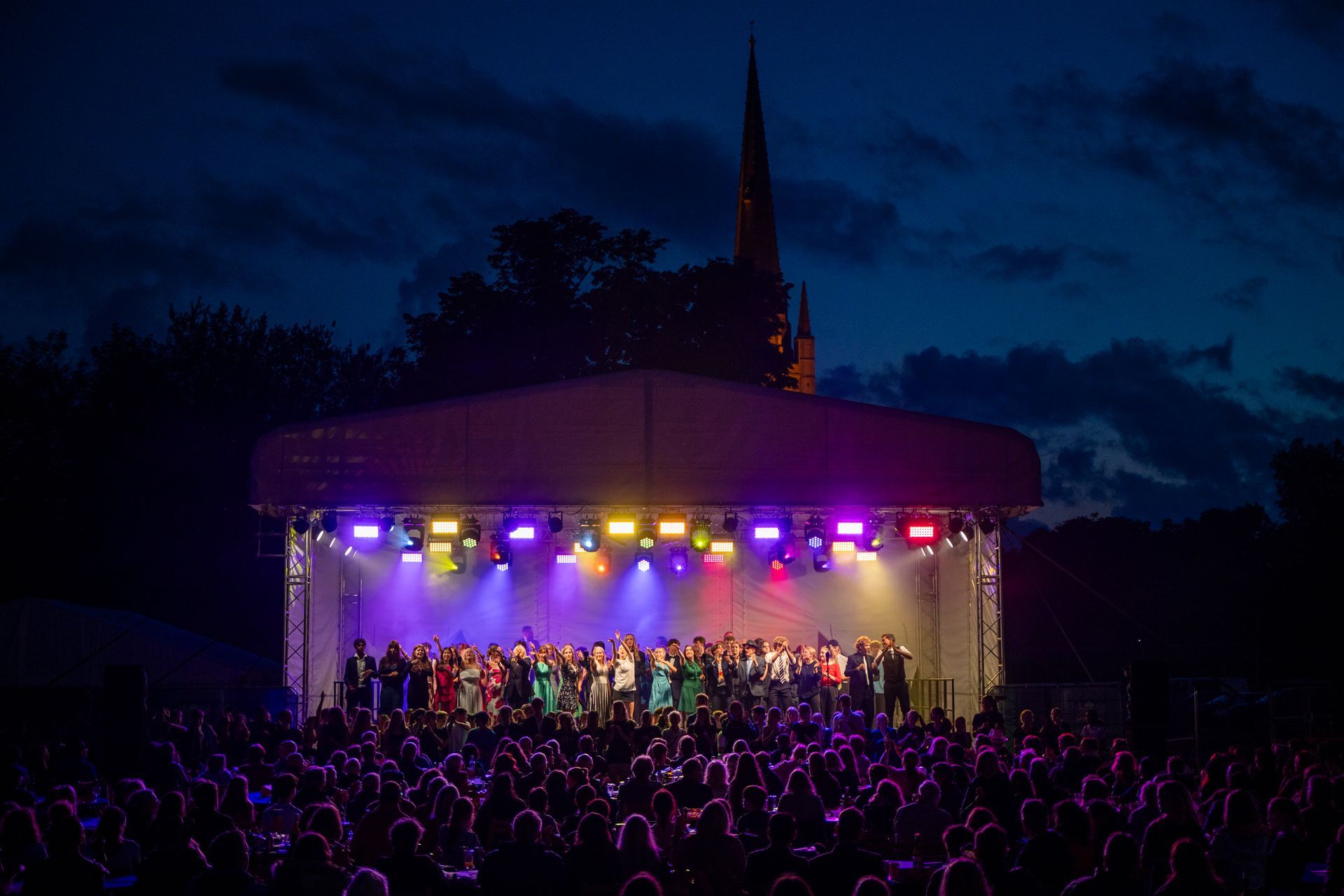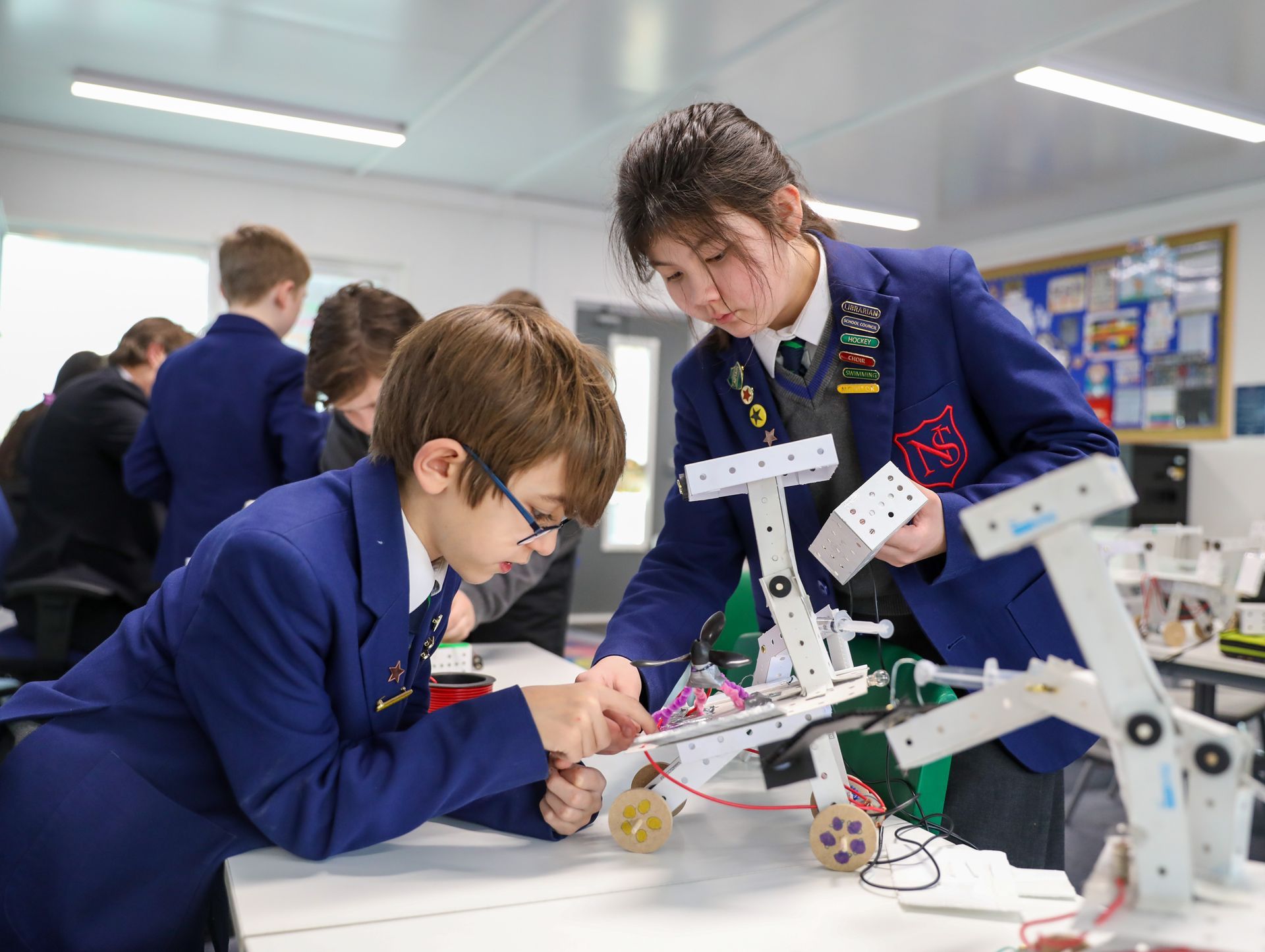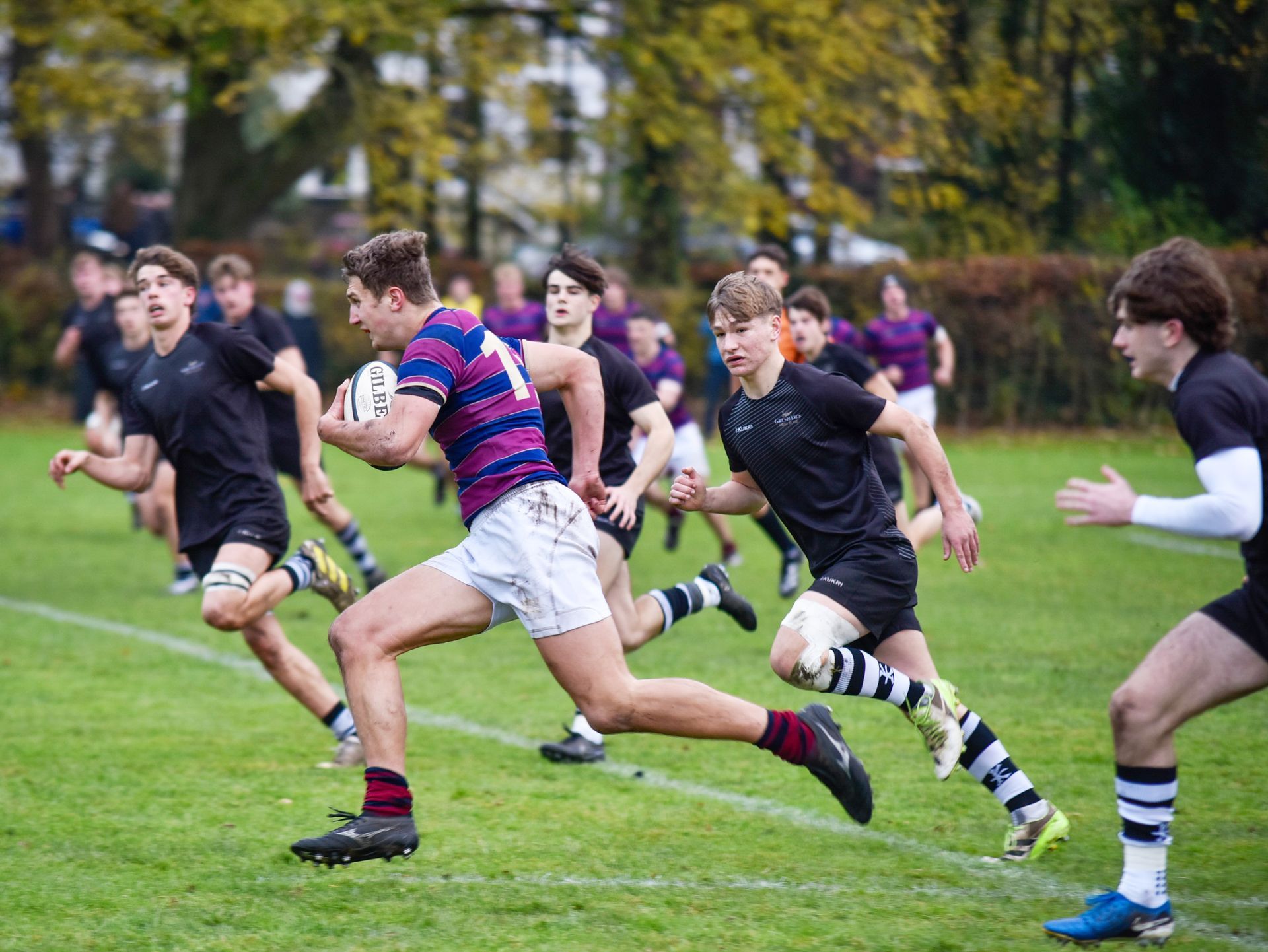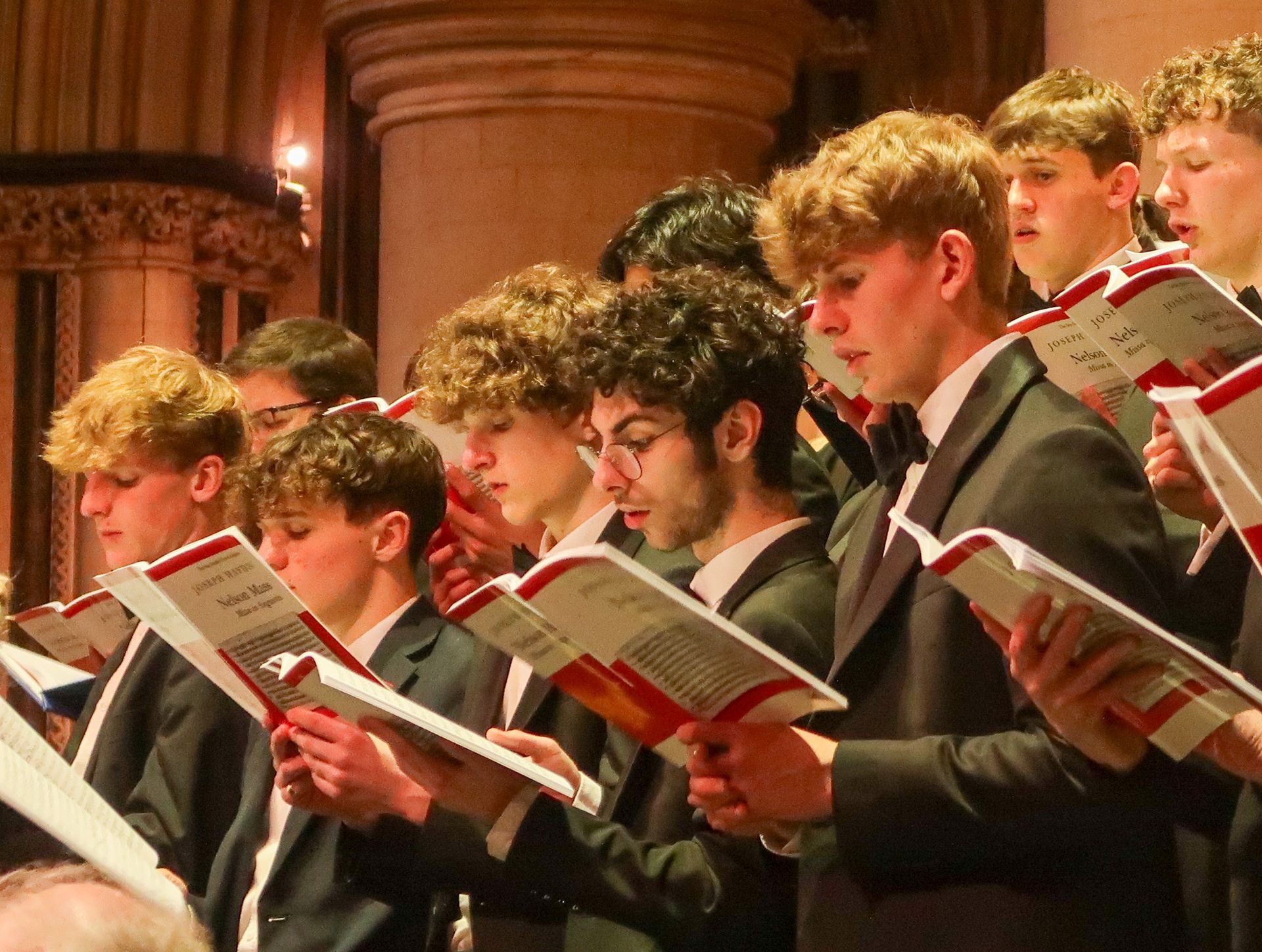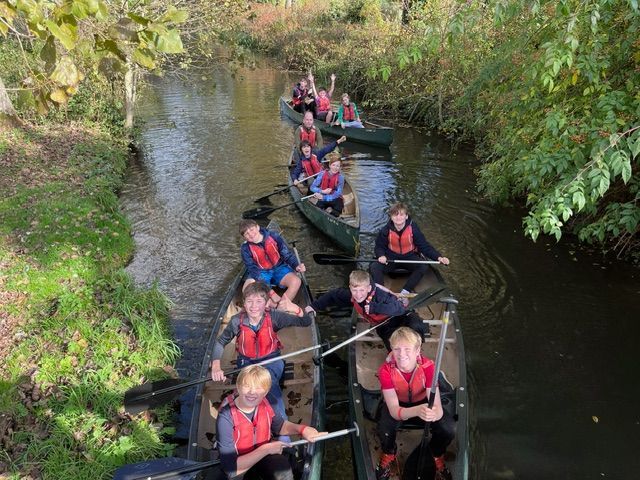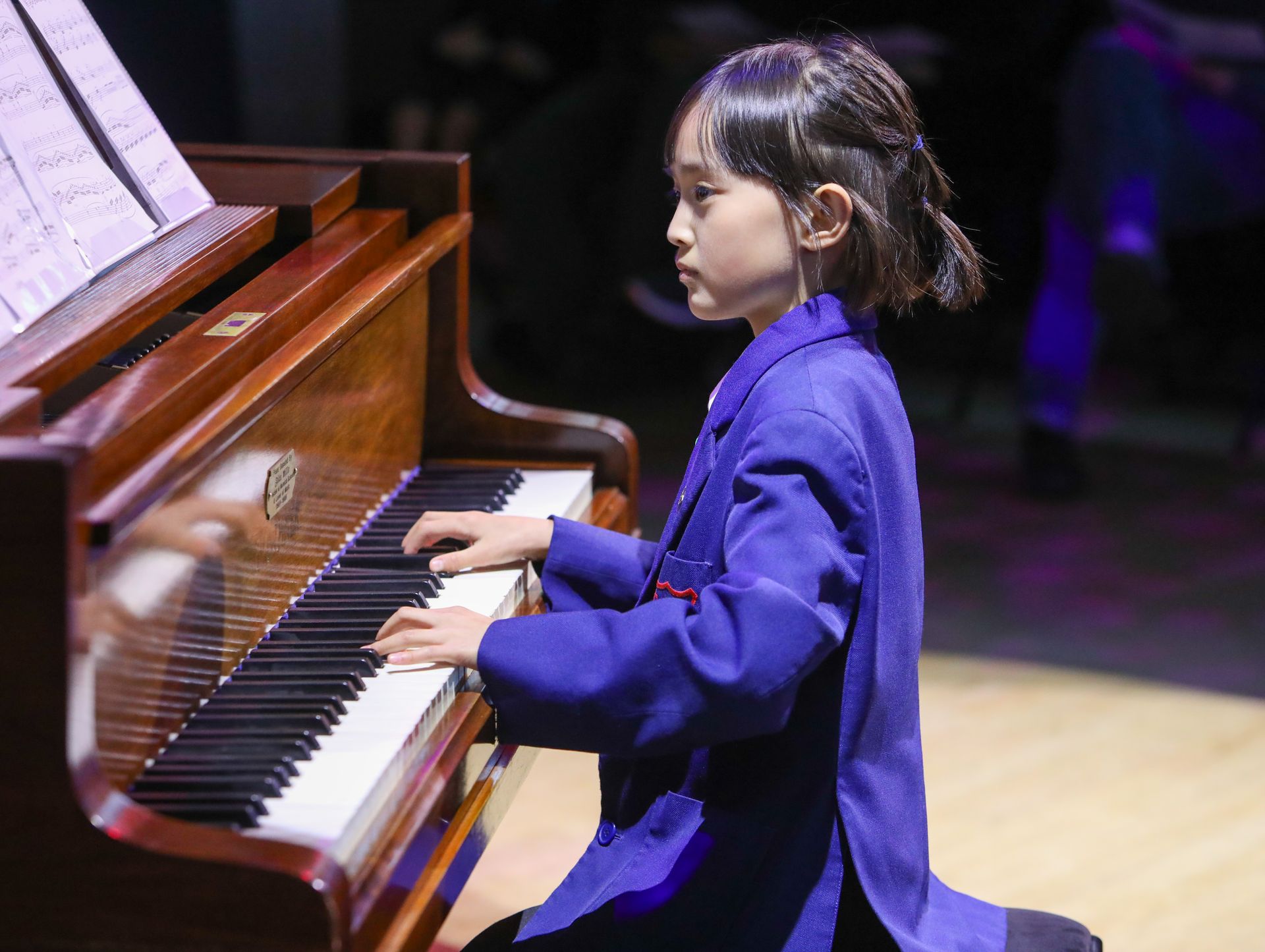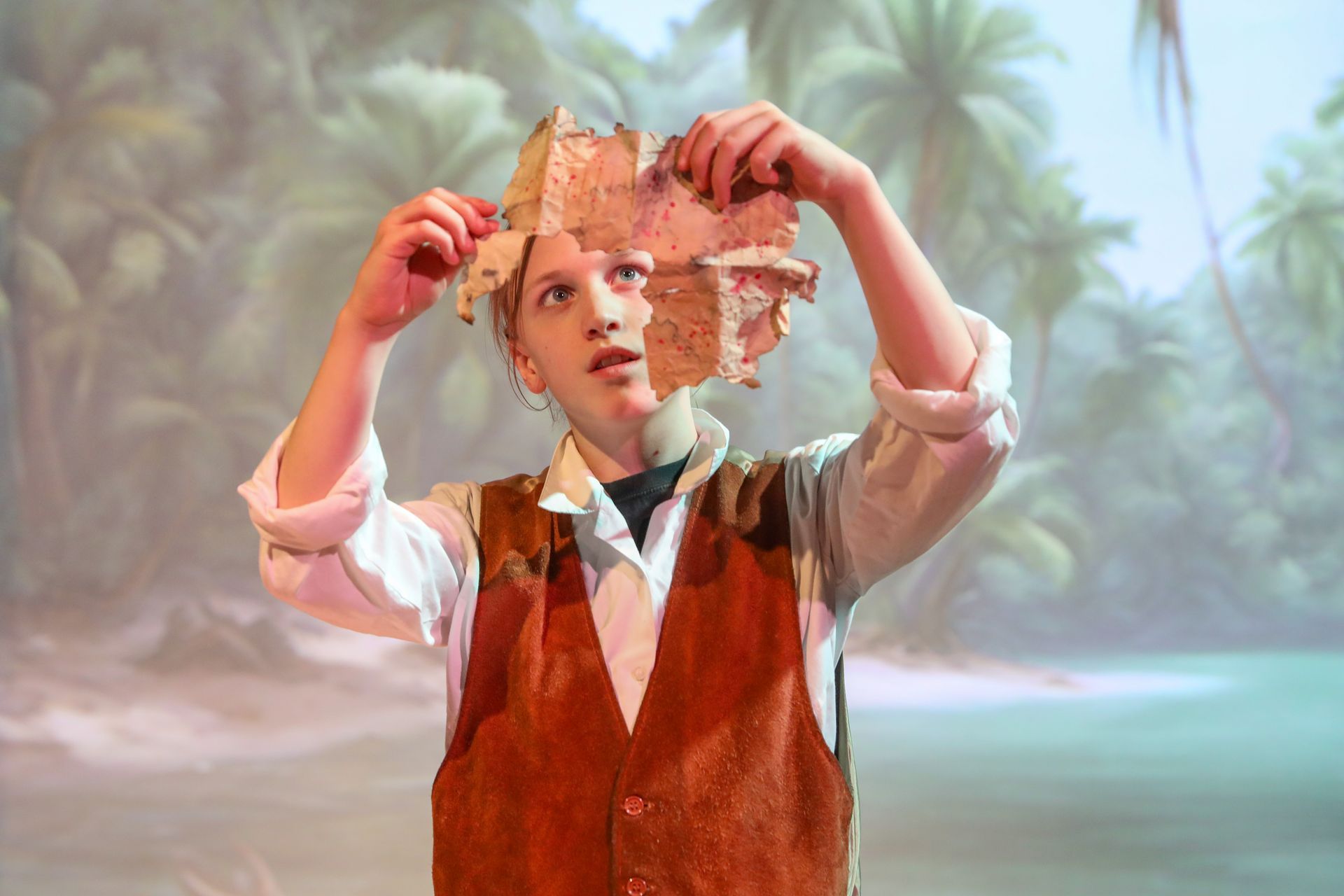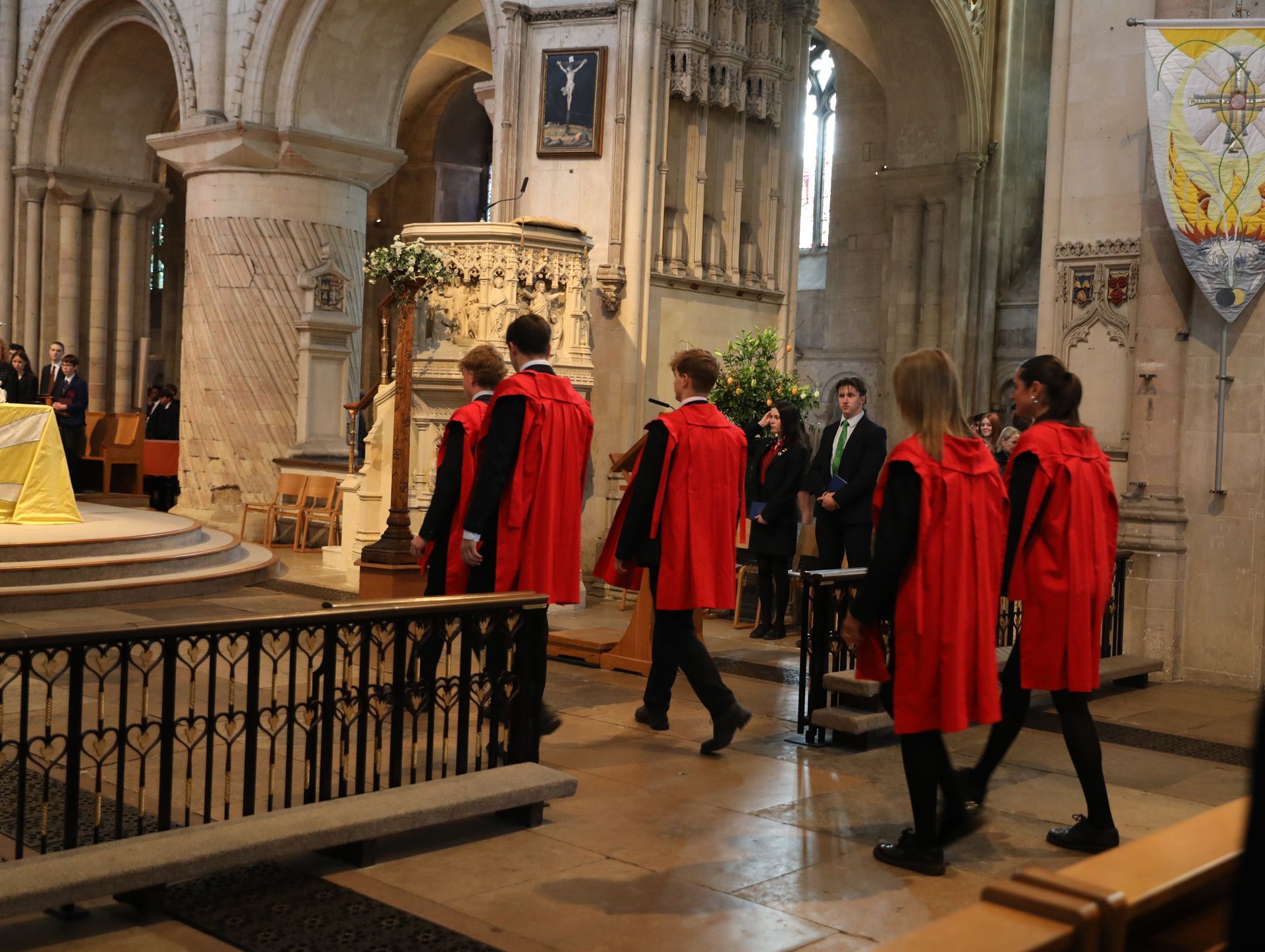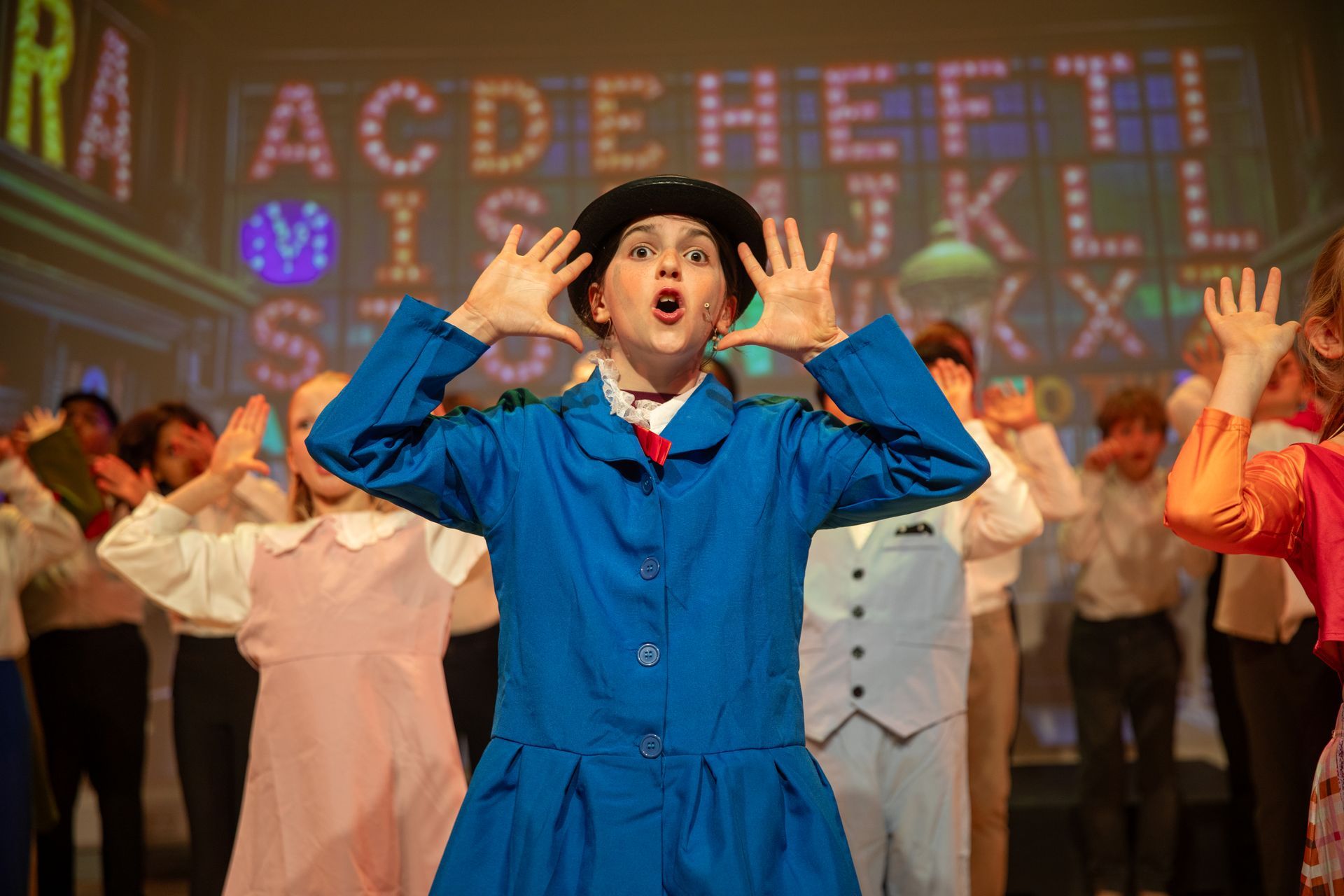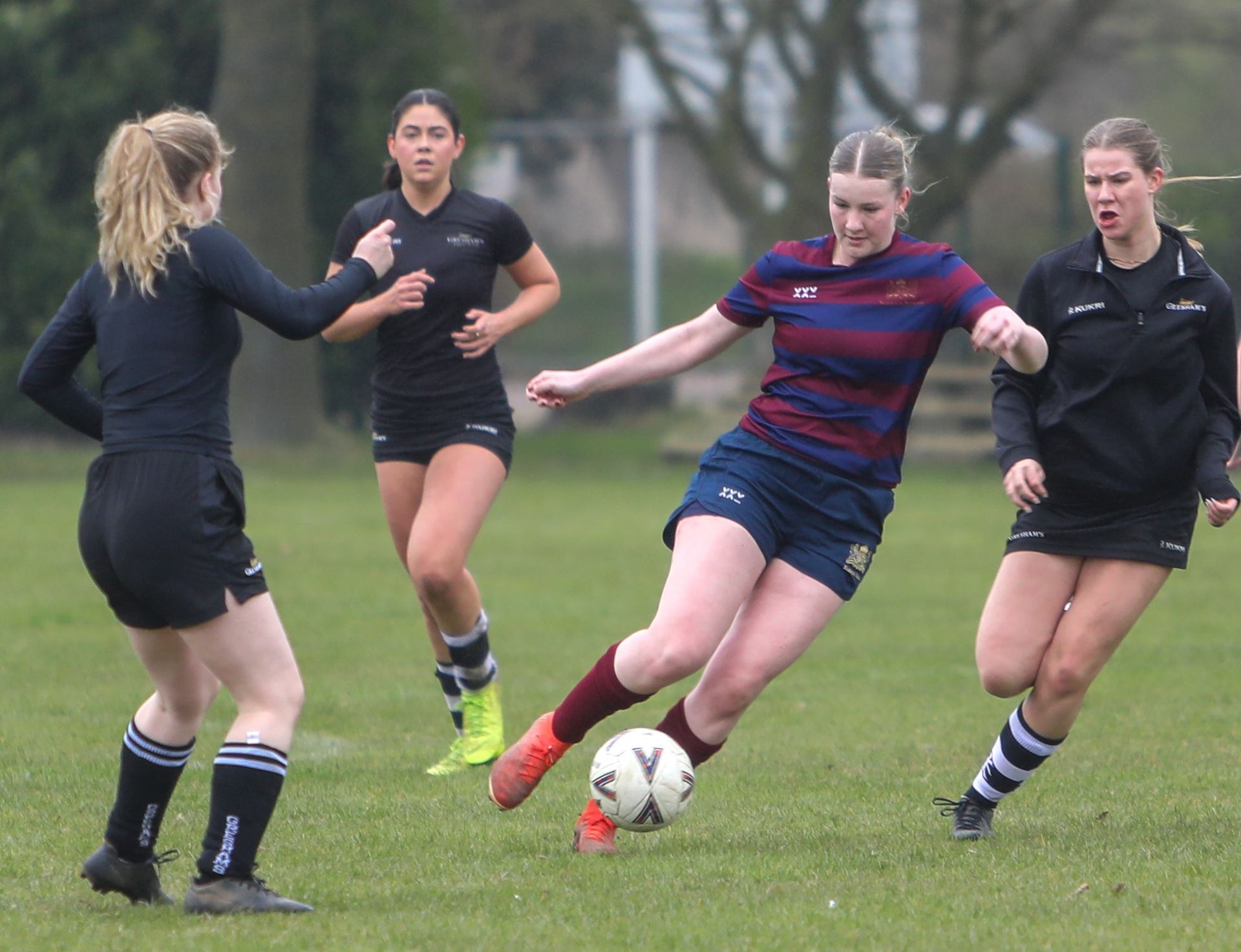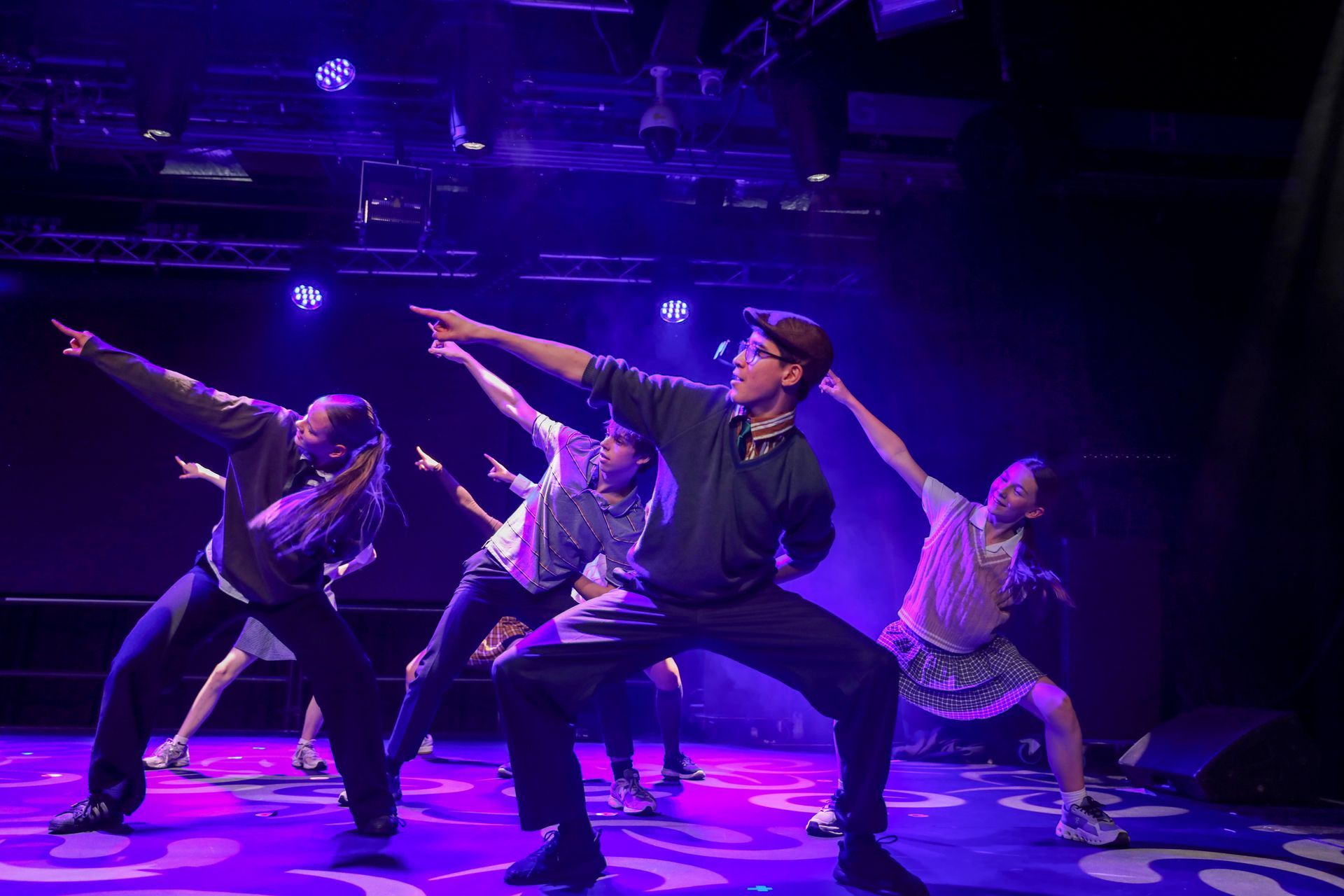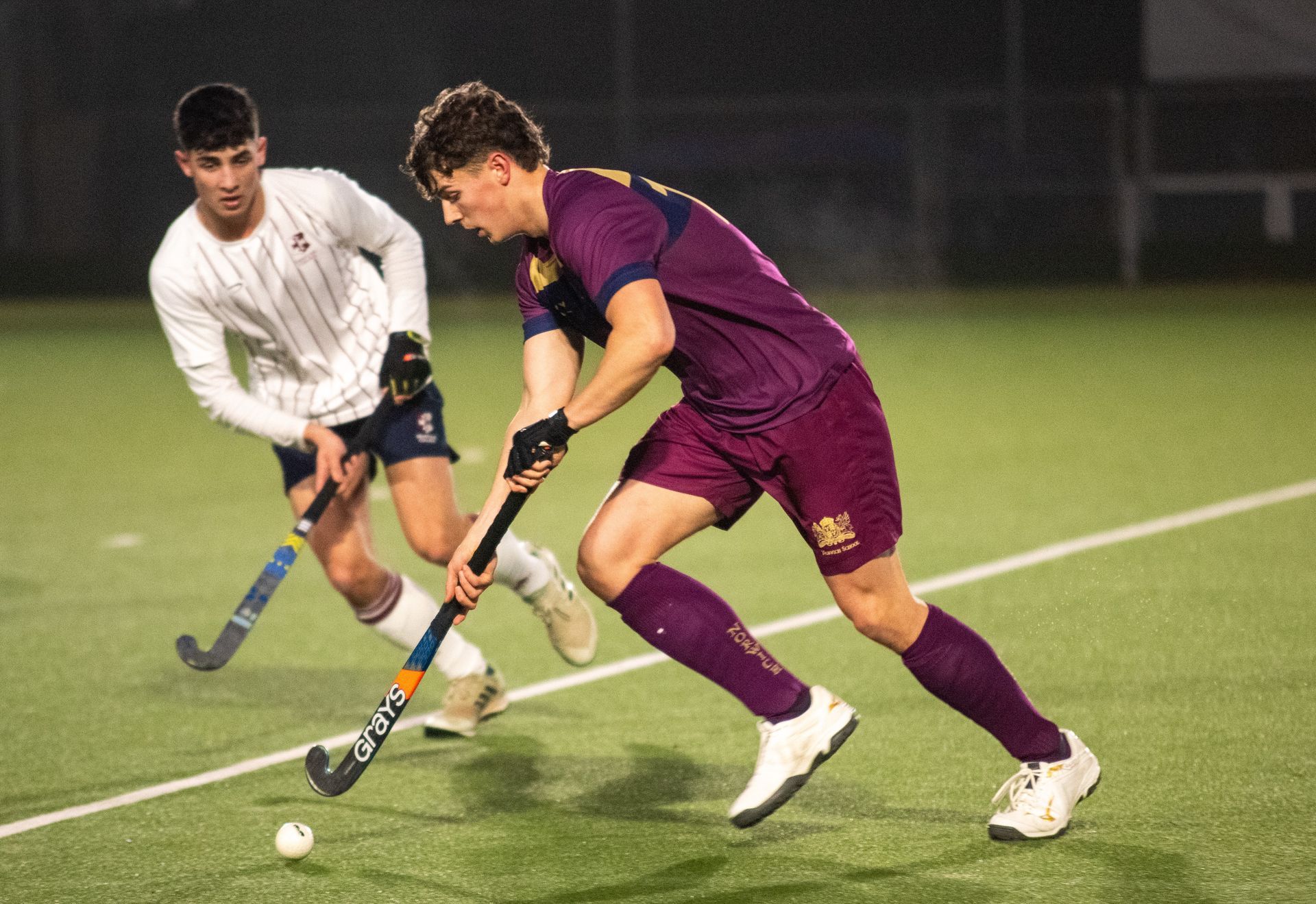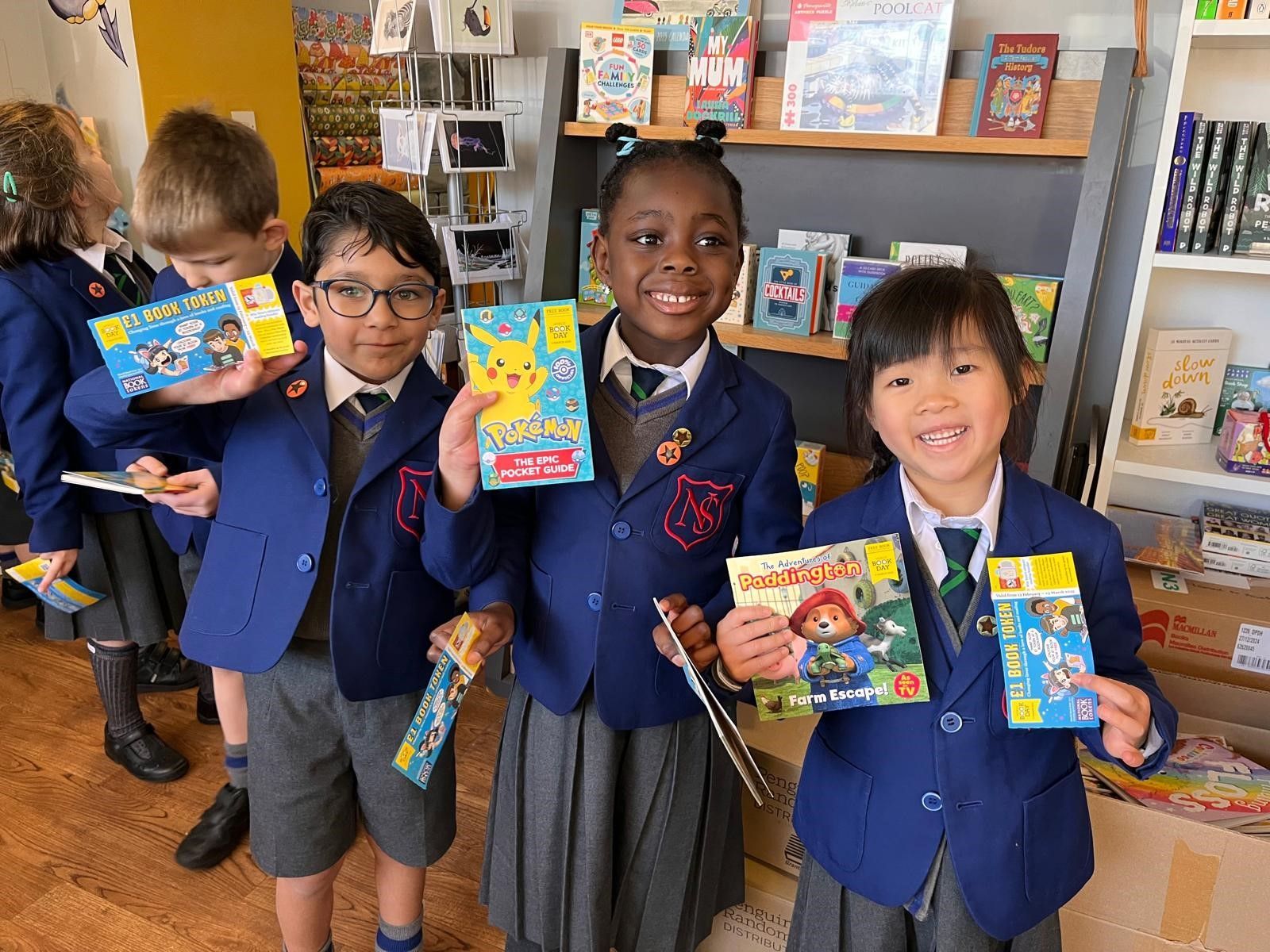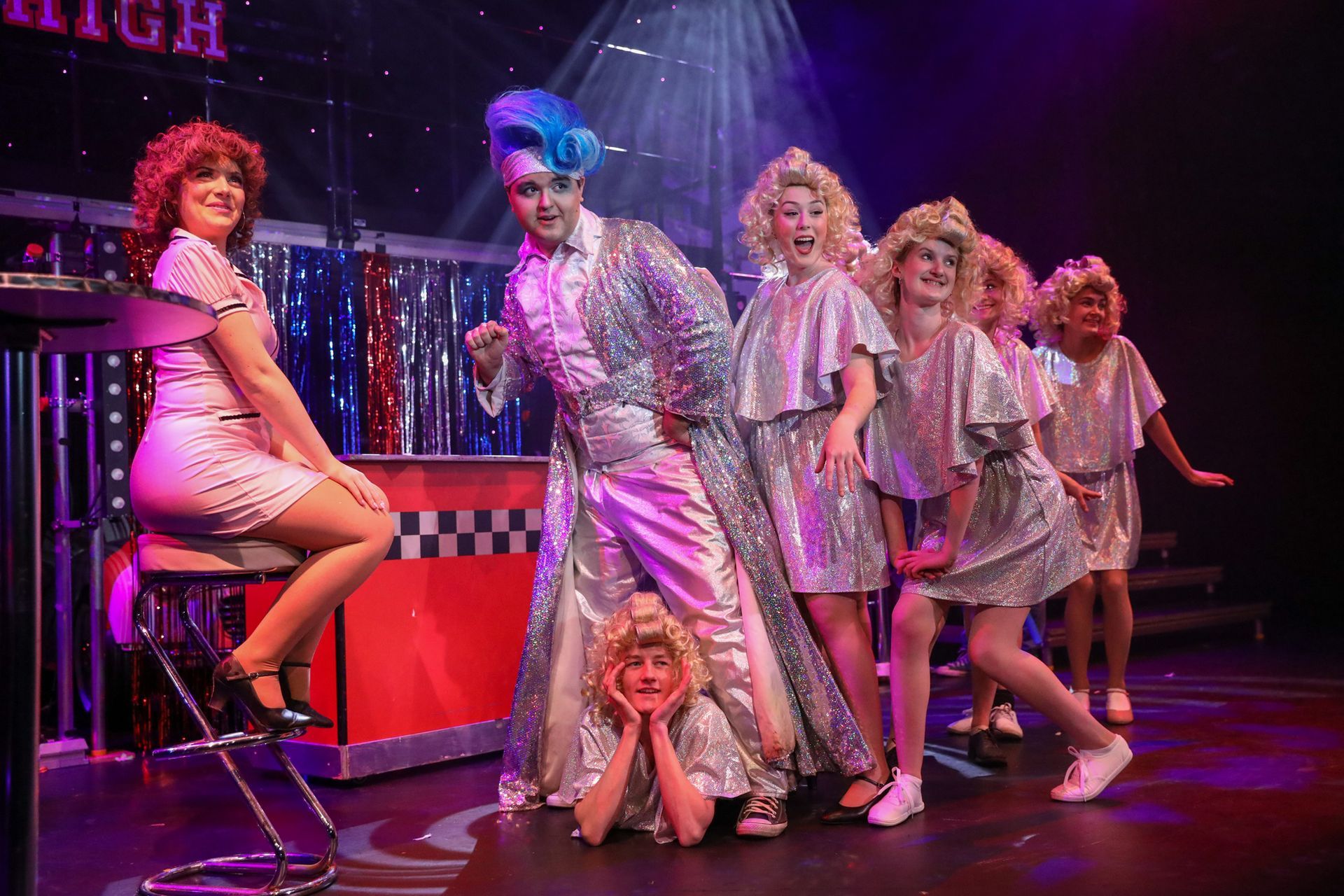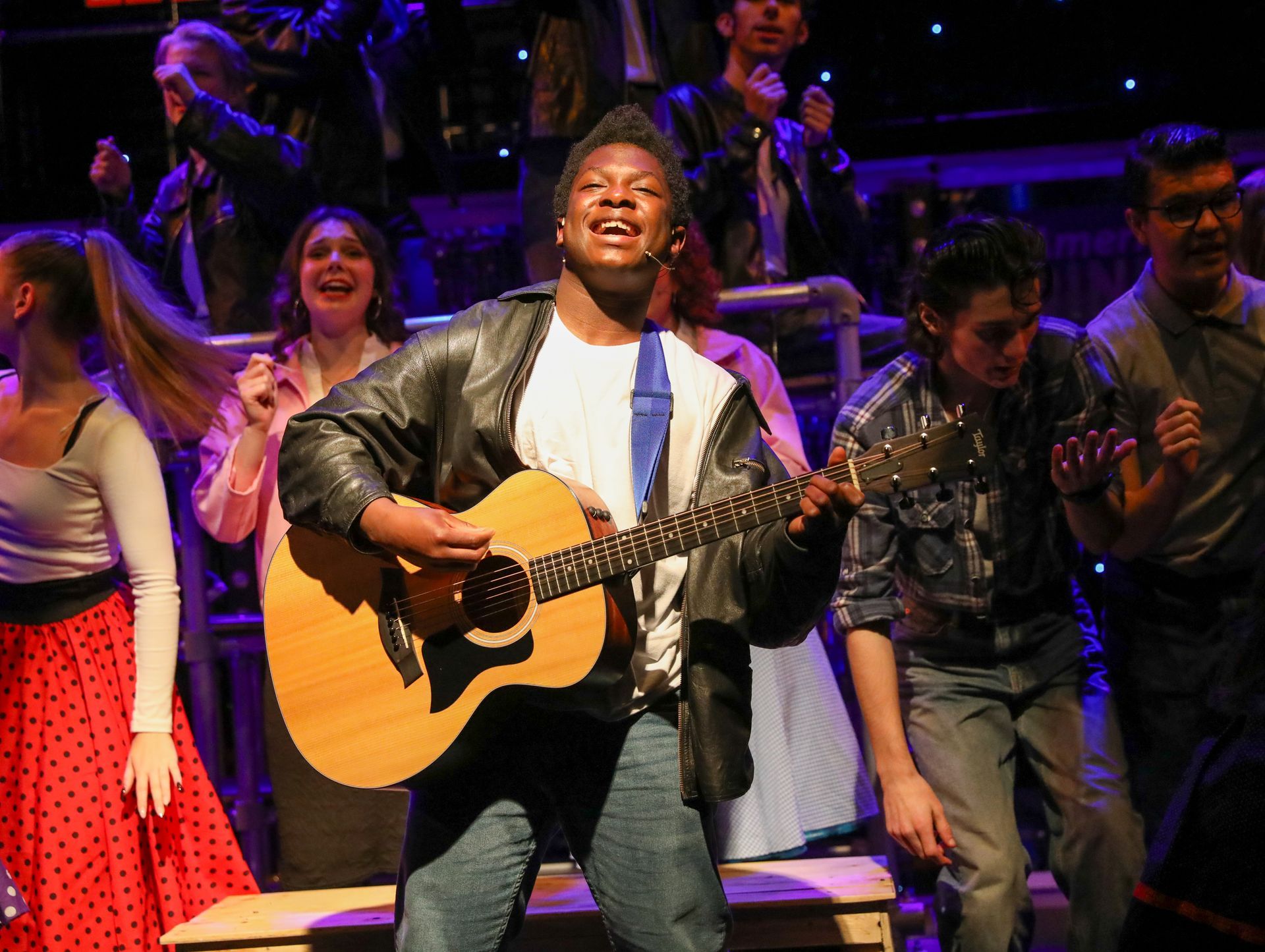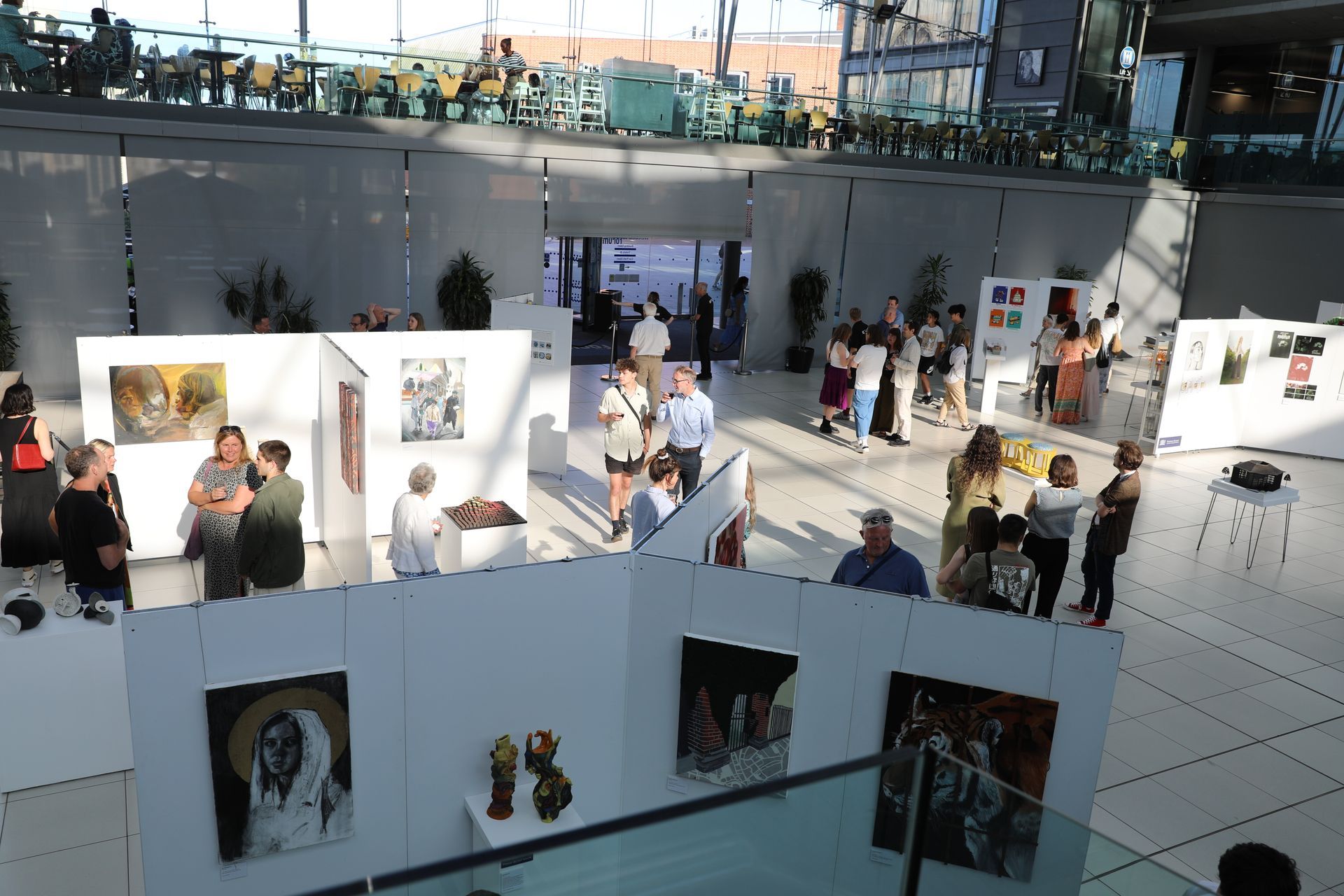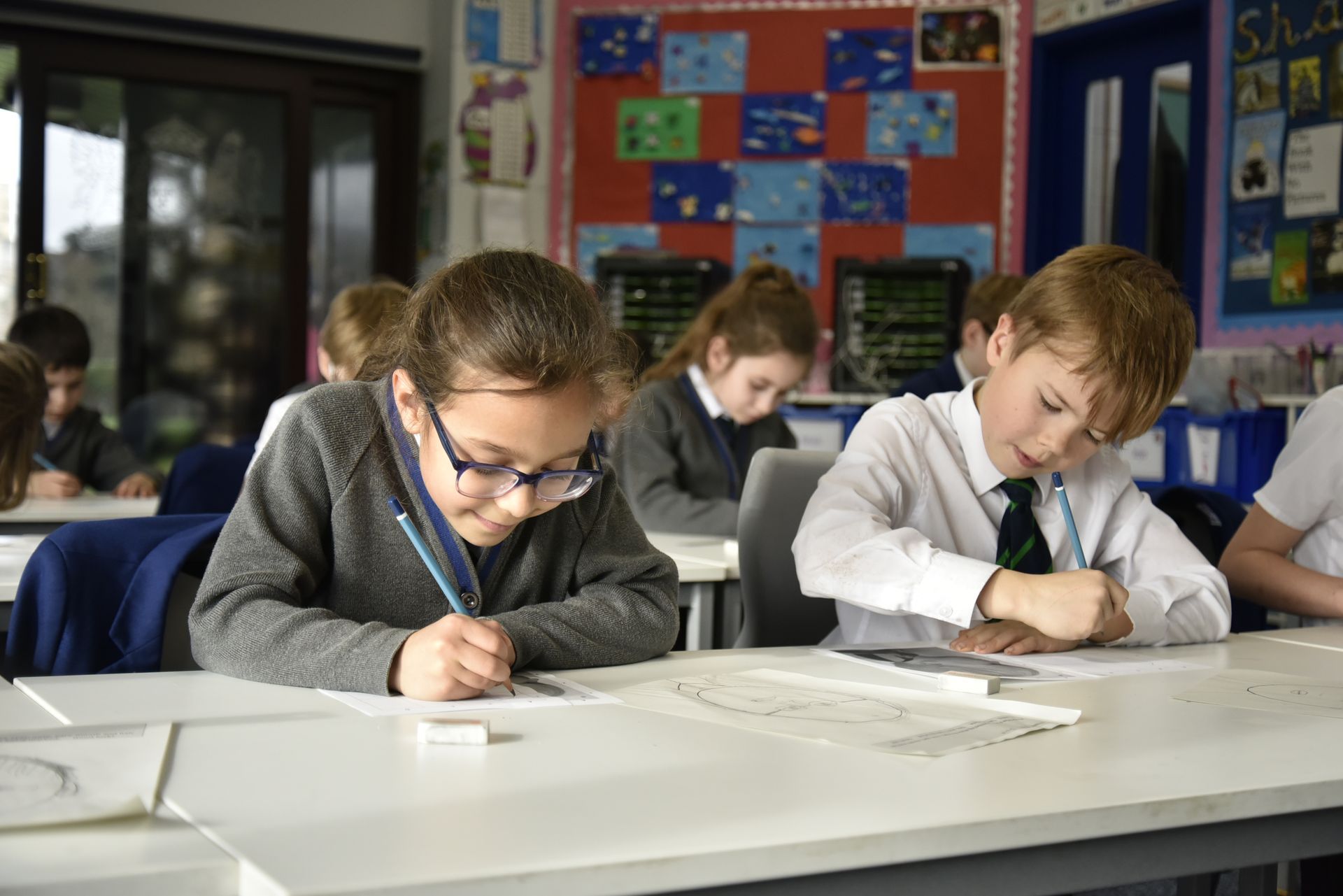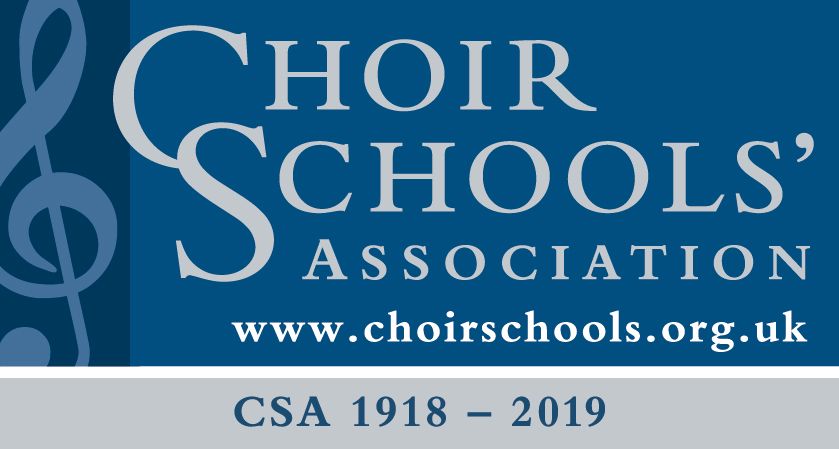Norwich School is a co-educational, independent day school
Norwich School is an independent, co-educational day school for pupils aged between three and eighteen.
Set in the beautiful grounds of the city’s historic Cathedral Close, the school is a traditional yet lively place to learn and combines a vibrant, imaginative culture with values of scholarship and mutual respect.
Discover More
Latest News
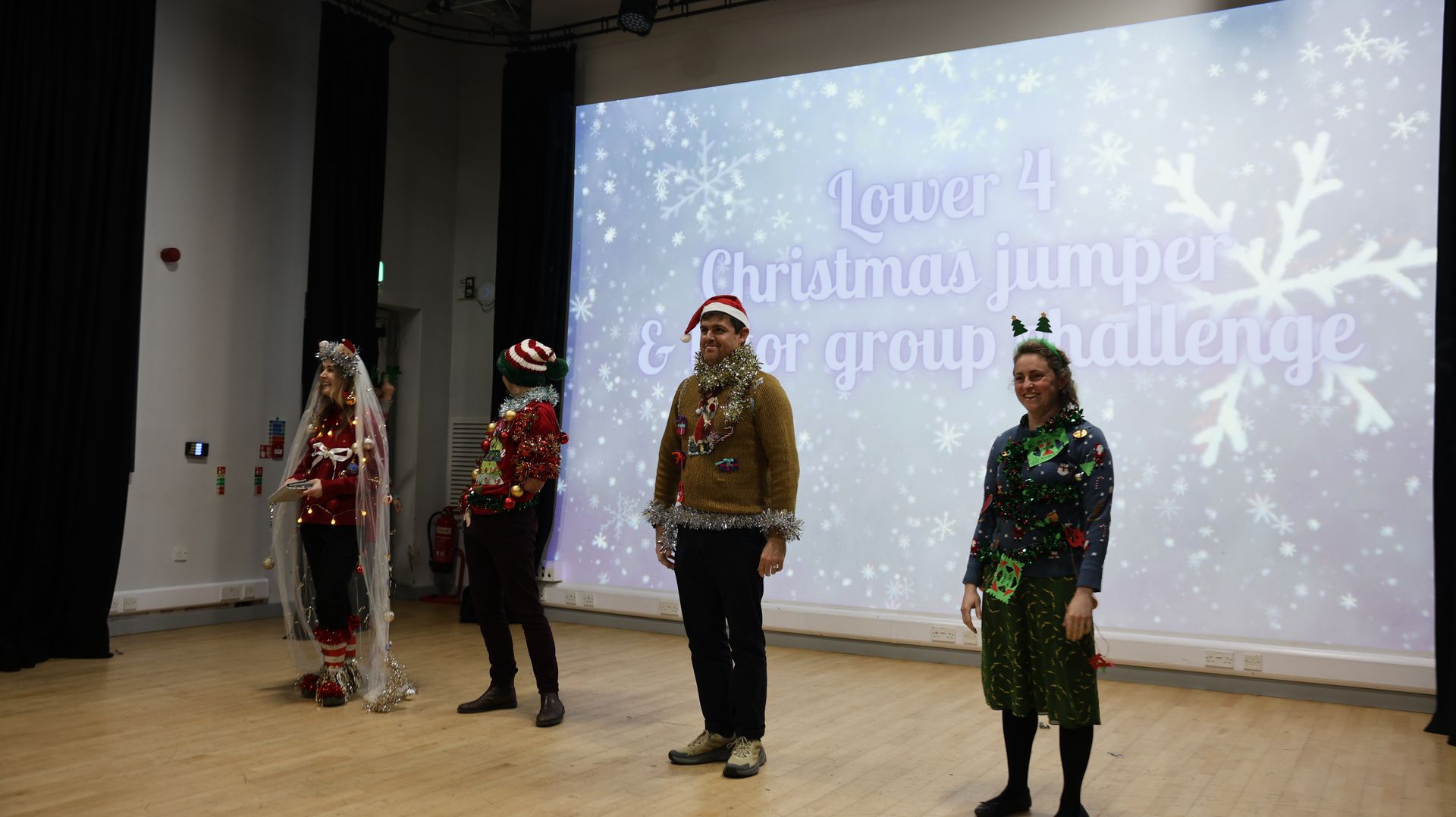
The Lower 4 Christmas Jumper Competition is always an event of great anticipation, and this year was no exception. Adorned with baubles, tinsel and whatever else Fourth Form could find (including Mariah Carey), the tutors made their way to the Blake for a catwalk never to be forgotten. However, this year had a twist with the additional competition of the Fourth Form Tutor Challenge. For the tutor challenge we had a range of performances from a mini play with a murder mystery, a Christmas ‘Guess Who’ quiz, a musical number and even a conducting dinosaur! Congratulations to all pupils who took part and especially to the tutors for taking to the runway and to the performances with such enthusiasm. Congratulations to L42 who won this year’s jumper competition, following behind in 2 nd place was L43. For the tutor challenge we had L41 in 1 st place and L44 in 2 nd! We look forward to seeing what the pupils come up with next year….
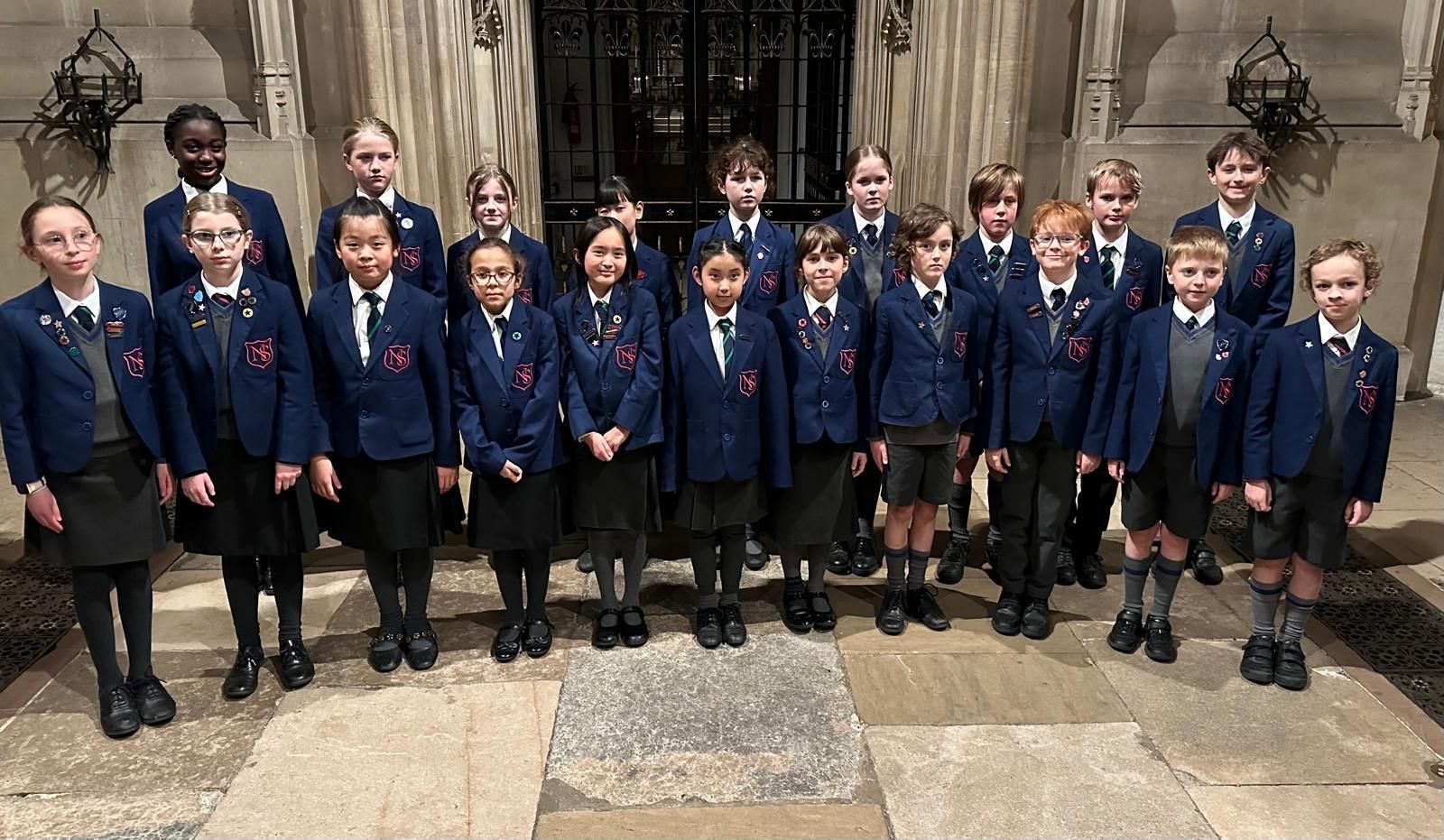
On Thursday 11 November the Lower School Chamber Choir sang at the Priscilla Bacon Hospice Charity Lights to Remember Service. This annual event is an opportunity for the people of Norfolk to remember and give thanks for the lives of those who have received hospice care, as well as acknowledge with gratitude the exceptional work of everyone involved with Priscilla Bacon Lodge – staff and volunteers from Norfolk Community Health and Care NHS Trust, and the staff, volunteers, donors, fundraisers and supporters of the Charity. Norwich Lower School Chamber Choir have been invited to sing at the event for a number of years, and this year was no exception. Led by Head of Lower School Music, Mr Vine, the choir dazzled with a beautiful performance of ‘Sweet Silent Night’ by Andy Beck. Hugo Stevenson, Head of Fundraising and Communications at the Priscilla Bacon Hospice Charity said: “It is always an absolute joy to welcome Norwich School Chamber Choir to this flagship event for the charity. Once again they delivered a wonderful performance and added something really special to the service. Our sincere thanks to Mr Vine, Mrs Barclay and the children.”
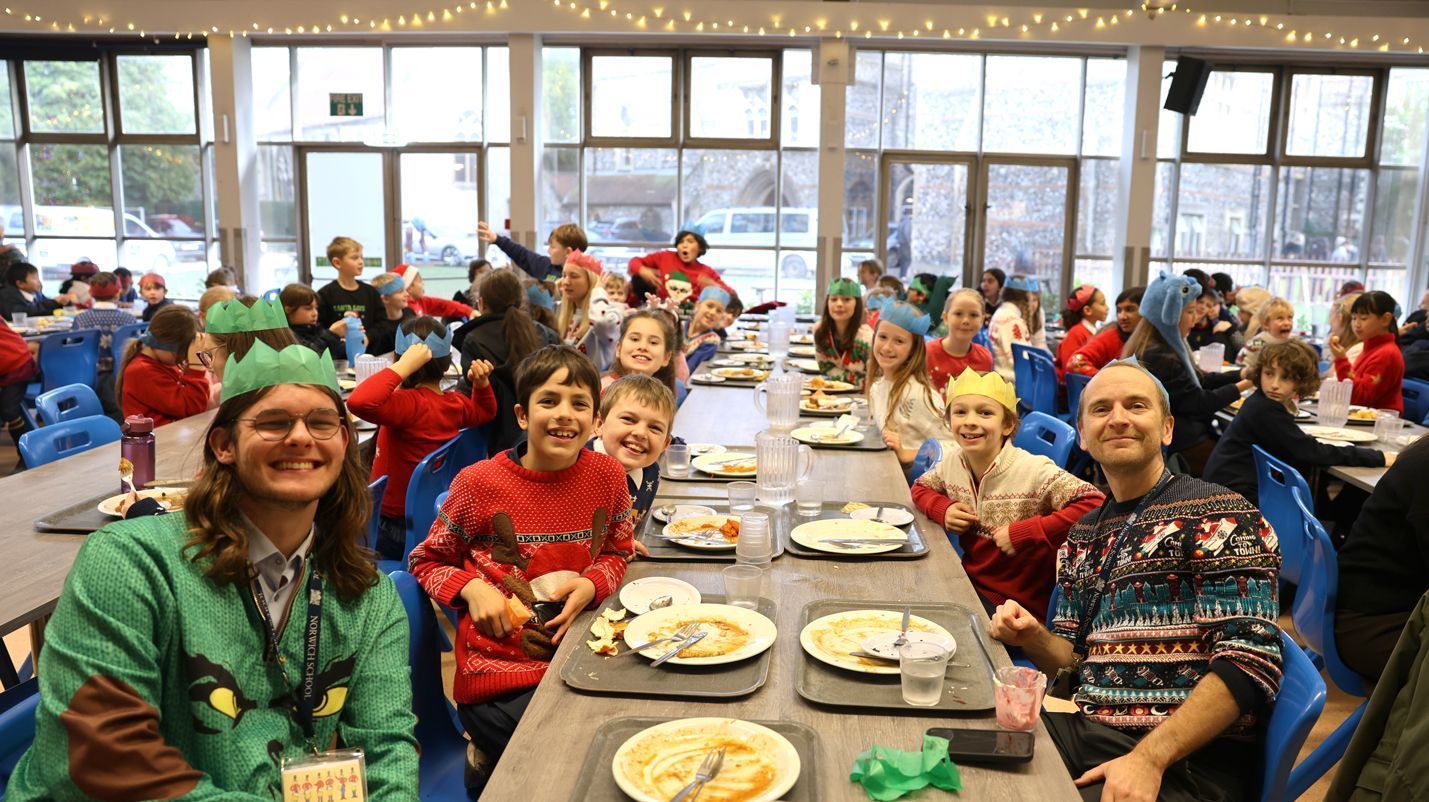
Lower School pupils excitedly celebrated the last day of the Michaelmas term on Friday 12 December, enjoying their Christmas lunch in a fine array of festive knitwear! There was a party atmosphere in the Refectory with decorations, paper crowns and Christmas songs, all in view of the beautifully illuminated tree. Turkey, roast potatoes and cranberry sauce were all on the special menu, followed by yule log for pudding. Everyone at the Lower School would like to wish our whole community a restful and relaxing Christmas and we will see you all again in 2026!
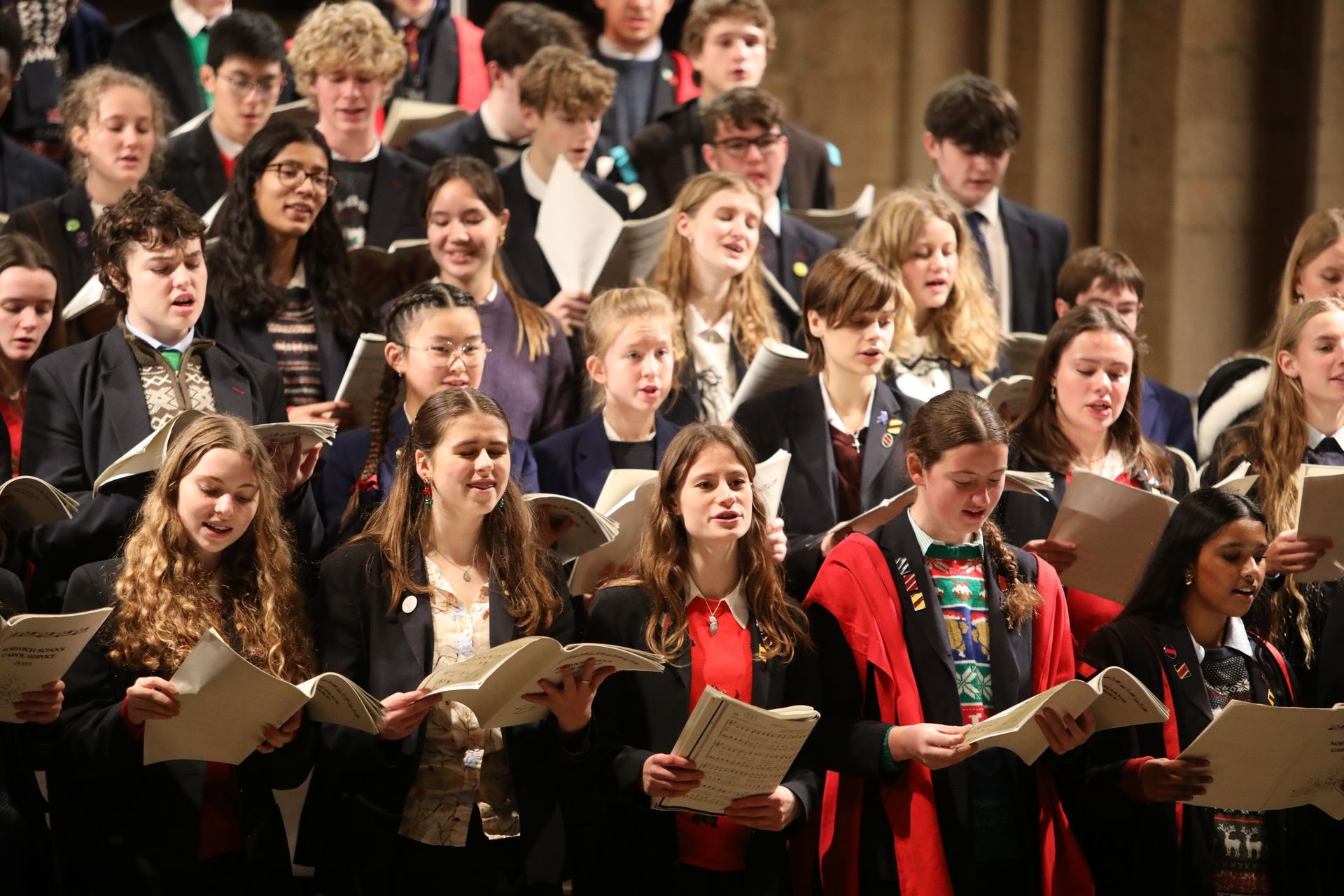
In his End of the Michaelmas Term address, the Head focused on two key things – kindness and participation. Everyone in the Cathedral was moved as he brought to life random acts of kindness observed on the London Underground. Pupils and staff alike then had a super time putting into practice the participation element of his address, as the Red Gowns got the whole congregation enjoying an interactive version of the 12 Days of Christmas! “So, the tail end of term is finally upon us. Each term obviously has its own shape and this one is characterised by the darkening evenings, the overlap with Advent, and by its brute length. There is always something of the endurance race about this, our longest term, so well done to everyone on getting through it! And now attention can turn towards the upcoming Christmas holiday. As you get ready for it, I pick out two features: kindness and participation. The first, kindness. We associate such a quality with this time of year: “Oh come on, it’s Christmas!” Yet, just like any other time of year, kindness is to be measured in actions every bit as in attitude. It may be apocryphal, but I heard that London Underground’s policy for people stranded on the platform with a bag, pram or such like when the lifts are not working is to stand by the stairs and wait for someone to help. I really want this to be true and, after all, you do not see someone at the bottom of the stairs with a large bag for long; normally, someone will come past and offer to carry it upstairs. This got me investigating random acts of kindness on the Underground further. It turns out that the artist Michael Landy conducted a project celebrating such acts in 2011-12. The artist explained, ‘Sometimes we tend to assume that you have to be superhuman to be kind, rather than just an ordinary person.’ So, to unsettle that idea, Acts of Kindness catches those little exchanges that are almost too fleeting and mundane to be noticed or remembered. Landy is fascinated by the way we tend to disappear into our own bubble on the Tube, disconnected from the people around us. One day, he recalls, while sitting in a Tube train absorbed in his own world, he suddenly became aware of two strangers, one trying to help the other. For Landy it was a life-enhancing event. Landy defines kindness as going beyond yourself to acknowledge someone else’s needs and feelings. ‘It’s a gesture of trust between two people’, he said. ‘There’s a risk in that. It requires courage and acceptance on both sides. ‘That’s what “kindness” means – we’re kin, we’re of one kind.’ Here are four examples from Landy’s project: Running down the stairs to catch the train that had just pulled in, I hadn’t noticed my iPod falling out of my pocket until I was inside the carriage, watching a stranger pick it up off the wet platform floor. He looked up at me through the closing doors (while I had already assumed that I probably wouldn’t be seeing it again) and mouthed the words ‘I’ll wait here!’ through the glass. And he did. In December 1993 my 5 year old daughter rushed onto a Tube train ahead of me and before I could follow her with my other child the doors closed and the train pulled out of the station as I ran alongside, banging on the doors in a panic. I caught the next train and got off at the next stop to find my little girl being consoled by a group of young teenagers en-route to a concert who had got off the train to stay with her until I found her. They had to dash off to get to the show and I think I was crying too much to thank them properly, so I welcome this opportunity to say THANK YOU, THANK YOU! While on my second maternity leave, after 2 changes and 3 tubes I got to Finsbury Park only to find me, the toddler and the baby in the pram at the bottom of 3 flights of stairs. My heart sank. I wasn’t too happy to see 2 hooded young men loping down the stairs but as they got to bottom, they asked if they could help by taking the pram leaving me to carry the toddler. They carried it up the 3 flights safely and even missed their train to do so! I always think of them when people use the term ‘hoodie’ as a generic term for violent youth because their kindness made my day and challenged my lazy assumptions. I woke up to a phone call from my dad telling me my much-loved grandpa had died. On the Tube over to my parents I couldn’t stop crying. The woman sitting next to me asked if I was ok, and I told her my grandpa had died that morning. She took my hand and held it for the rest of the journey. I have never forgotten how comforted I felt by this small, intimate act. Such acts of generosity and kindness are certainly what I expect in our community while we are together: to go beyond the minimum in order to be helpful, thoughtful and sensitive to each other. I therefore encourage you to reflect on these stories and think about how you can be kind in your actions at Christmas and into 2026. The next three weeks are a great opportunity to practise this behaviour at home as there are always lots of chances to lean in and help. The second feature of Christmas I want to highlight is participation and joining in, perhaps with a little dose of silliness thrown in. It is an opportunity for friends and family to enjoy some harmless fun, spend time together and, hopefully, remind ourselves not always to take things seriously. I hope that got you into the Christmas spirit. Do have an excellent break and remember to practice your random, practical acts of kindness.”
